NEBRASKA MUNICIPAL
REVIEW

Columbus community leaders travel to Australia
City of Norfolk recognized for placemaking efforts
Lincoln middle school students dive into community planning
Official Publication of the League of Nebraska Municipalities
MAY 2024


Cities Legislative Committee
Seth Sorensen, City Manager, Alliance
Tobias Tempelmeyer, City Administrator/General Manager, Beatrice
Rusty Hike, Mayor, Bellevue
Jim Ristow, City Administrator, Bellevue
Mindy Rump, Mayor, Blair
Phil Green, City Administrator, Blair
Miles Bannon, Council Member, Chadron
Tom Menke, City Manager, Chadron
Jim Bulkley, Mayor, Columbus
Tara Vasicek, City Administrator, Columbus
Dave Bauer, Mayor Crete
Tom Ourada, City Administrator, Crete
Joey Spellerberg, Mayor, Fremont
Jody Sanders, City Administrator, Fremont
Kent Ewing, Mayor, Gering
Laura McAloon, City Administrator, Grand Island
Mike Evans, Mayor, Gretna
Paula Dennison, City Administrator, Gretna
Corey Stutte, Mayor, Hastings
Shawn Metcalf, City Administrator, Hastings
James Liffrig, Mayor, Holdrege
The Director’s Message by L. Lynn Rex, LNM Executive Director – Another ‘Giant Step Forward’ as construction begins on a new League office building!
In the Aftermath – Gov. Pillen surveys the damage following the Arbor Day tornadoes
Nebraska Department of Economic Development highlights Red Cloud: Building beautiful communities to inspire the good life
Hard work recognized for City of Gibbon
The Land Down Under - Free Australia trip fuels new welcoming goals for City of Columbus
Center for Rural Affairs: Empowering rural communities like Walthill
A sense of place: City of Norfolk recognized for prioritizing placemaking in downtown
Bike Walk Nebraska: Embracing e-bikes within communities
RD: Lagoon renovations and replacements
A piece of history - The Lincoln Woman’s Club has long been a piece of the downtown landscape and civic history
LARM – Safety and quality of work … are they related?
CitiesSpeak Podcast: Bipartisan Leadership in Congress with U.S. Representatives Don Bacon and Salud Carbajal
NMPP Energy presents Community Project of the Year Awards
League building demolition photo panel
Building a future of their own: Lincoln middle school students imagine and build fully electric city for national competition in Washington D.C.
Chris Rector City Administrator, Holdrege
Stan Clouse, Mayor, Kearney
Brenda Jensen, City Manager, Kearney
Doug Kindig, Mayor, La Vista
Pam Buethe, Clerk, La Vista
John Fagot, Mayor, Lexington
Joe Pepplitsch, City Manager, Lexington
Margaret Blatchford, Assistant City Attorney, Lincoln
Linda Taylor, Mayor, McCook
Nate Schneider, City Manager, McCook
Bryan Bequette, Mayor, Nebraska City
Perry Mader, City Administrator, Nebraska City
Josh Moenning, Mayor, Norfolk
Andrew Colvin, City Administrator, Norfolk
Dani Myers-Noelle, City Attorney, Norfolk
Brandon Kelliher, Mayor, North Platte
Layne Groseth, City Admin./Utilities Manager, North Platte
Steve Krajewski, Mayor, Ogallala
Kevin Wilkins, City Manager, Ogallala
Thomas Warren, Chief of Staff, Omaha
David Black, Mayor, Papillion
Amber Powers, City Administrator, Papillion
Smaller Cities Legislative Committee
Jessica Quady, City Administrator, Ashland
Marlin Seeman, Mayor, Aurora
Eric Melcher, City Administrator, Aurora
Chris Anderson, City Administrator, Central City
Nikki Schwanz, City Administrator, Cozad
Andrew Lee, Admin./Clerk/Treasurer, Curtis
Alan Michl, Chairperson, Exeter
Becky Erdkamp, Clerk/Treasurer, Exeter
Kyle Svec, City Administrator, Geneva
Deb VanMatre, Mayor, Gibbon
Matt Smallcomb, City Administrator, Gibbon
Gary Greer, City Administrator, Gothenburg
Jana Tietjen, Clerk, Hebron
Kelly Oelke, City Administrator, Hickman
Janine K. Schmidt, CMC/Treasurer, Morrill
Sandra Schendt, Clerk/Treasurer, Nelson
David Russell, Director of Government Affairs, NMPP Energy
Mandy Hansen, Government Affairs Liason, NMPP Energy
Sandy Kruml Clerk/Treasurer, Ord
Mike Feeken, Mayor, St. Paul
Nancy Bryan, Clerk/Treasurer, Stromsburg
Sandra Foote, Council Member, Superior
R. Paul Lambert, Mayor, Plattsmouth
Emily Bausch, City Administrator, Plattsmouth
Don Groesser, Mayor, Ralston
Brian Kavanaugh, Council Member, Ralston
Rick Hoppe, City Administrator, Ralston
William De Roos, City Administrator, Schuyler
Jeanne McKerrigan, Mayor, Scottsbluff
Jordan Colwell, Vice Mayor, Scottsbluff
Kevin Spencer, City Manager/Police Chief, Scottsbluff
Joshua Eickmeier, Mayor, Seward
Greg Butcher, City Administrator, Seward
Roger Gallaway, Mayor, Sidney
David Scott, City Manager, Sidney
Carol Schuldt, Council Member, South Sioux City
Lance Hedquist, City Administrator, South Sioux City
Cale Giese, Mayor, Wayne
Jill Brodersen, Council President, Wayne
Wes Blecke, City Administrator, Wayne
Barry Redfern, Mayor, York
Dr. Sue Crawford, City Administrator, York
Jeff Hofaker, City Administrator, Sutton
Jessica Meyer, City Administrator, Syracuse
Kyle Arganbright, Mayor, Valentine
Melissa Harrell, City Administrator, Wahoo
Desiree Soloman, City Attorney, Waterloo
Stephanie Fisher, City Administrator, Waverly
Tom Goulette, City Administrator/Utility Superintendent, West Point
Randy Woldt, Utilities Superintendent, Wisner
MAY 2024 4
USDA
6 About the Cover: Utility workers fix down lines and work to restore power following the Arbor Day tornadoes. Photo by Josh Wolfe 18 16 25 24 26 8 9 14 No. 1,189 SSN 0028–1906
Contents
Larger
11 12 22
Executive Board
2023-2024
President Deb VanMatre Mayor, Gibbon
President-Elect Marlin Seeman Mayor, Aurora
Vice President Bryan Bequette Mayor, Nebraska City
Past President Paul Lambert Mayor, Plattsmouth
Directors
Jean Stothert Mayor, Omaha
Leirion Gaylor
Baird Mayor, Lincoln
Julie A. Deepe Mayor, Deshler
Catherine-Jo
Mills Village Chair, Ansley
Joey Spellerberg Mayor, Fremont
Jordan Colwell Vice Mayor, Scottsbluff
Josh Moenning Mayor, Norfolk
Sharon Powell Village Board President, Utica
Jeff Hofaker City Administrator, Sutton
Janine K. Schmidt CMC/Treasurer, Morrill
Layne Groseth City Administrator/Utilities Manager, North Platte
Affiliated Sections
City Managers Amber Powers Papillion
Clerks Kellie Crowell Ravenna
Municipal Brandi Kloepping
Accounting Cozad & Finance
Fire Chiefs Dennis Thompson North Platte
Utilities Duane Hoffman Oxford
League Staff
L. Lynn Rex Executive Director
Christy Abraham Legal Counsel
Lash Chaffin Utilities Section Director
Cherie DeFreece Administrative Assistant/ Membership Services Assistant
Brenda Henning Membership Services Assistant
Ethan Nguyen LNM/LARM Information Technology Manager
Jackson Sash Utilities Field Representative/ Training Coordinator
Shirley Riley Membership Services Director
Ashley Wolfe Marketing/Communications Director
LARM Staff
Dave Bos Executive Director
Tracy Juranek Assistant Executive Director, Customer Service Specialist
Diane Becker Communications/Marketing Director
Kyla Brockevelt Executive Administrative Assistant
Drew Cook Customer Service Specialist
John Hobbs Loss Control Specialist
James Kelley Loss Control Specialist
Fred Wiebelhaus Loss Control/Claims Manager
July 1
Between July 10 and July 30
Between July 15 and August 15
Municipal Legal Calendar
(All statute citations to Revised Statutes of Nebraska)
JULY 2024
CITIES OF THE FIRST CLASS
Chair of the Park and Recreation Commissioners must file with City Clerk an itemized statement of all expenditures of the Park and Recreation Board. (16-697)
Advertise for Class C Liquor License renewals. (53-135.01)
Job titles and salaries of employees shall be published. (19-1102)
Prior to publication of notice of budget hearing
On or before August 20
On or before September 30
Within 10 working days following meeting or before next meeting (whichever is sooner)
Within 15 days of passage
Within 30 days following Council meeting
Within 20 days after end of month
* *
Council prepares proposed budget statement and makes it available to the public. (13-504) *Does not apply to cities with a biennial budget that are in the second year of the biennial budget period.
County Assessor certifies to each governing body the current valuation of all property subject to the applicable levy. (13-509)
Budget Statement filed with County Clerk and State Auditor (13-508) *Does not apply to cities with a biennial budget that are in the second year of the biennial budget period.
Clerk to have minutes available for public inspection. (84-1413)
Clerk publishes ordinances passed. (16-405)
Clerk publishes official proceedings of meetings, including claims. (19-1102)
Treasurer files monthly financial report. (16-318)
Clerk must prepare agenda prior to next Council meeting. (84-1411)
End of Each Quarter Report from Depository Banks due. (16-714)
By July 31
Between July 10 and July 30
Between July 15 and August 15
Prior to publication of notice of budget hearing
On or before August 20
On or before September 30
Within 10 working days following meeting or before next meeting
(whichever is sooner)
Within 15 days of Passage
Within 30 days following
Council meeting
Within 20 days after end of month
* *
By July 31
Clerk files Lane Mile Report with Nebraska Department of Transportation (39-2517 and 39-2518)
VILLAGES AND CITIES OF THE SECOND CLASS
Advertise for Class C Liquor License renewals. (53-135.01)
Job titles and salaries of employees shall be published. (19-1102)
Governing body prepares proposed budget statement and makes it available to the public. (13-504) *Does not apply to cities with a biennial budget that are in the second year of the biennial budget period.
County Assessor certifies to each governing body the current valuation of all property subject to the applicable levy. (13-509)
Budget statement filed with County Clerk and State Auditor. (13-508) *Does not apply to cities with a biennial budget that are in the second year of the biennial budget period.
Clerk to have minutes available for public inspection. (84-1413)
Clerk publishes or posts ordinances passed. (17-613)
Clerk publishes official proceedings of meeting including claims. (19-1102)
Treasurer files monthly financial report. (17-606)
Clerk must prepare agenda prior to next Council or Board meeting. (84-1411)
Clerk files Lane Mile Report with Nebraska Department of Transportation (39-2517 and 39-2518)
Nebraska Municipal Review Editor and Advertising Sales: Ashley Wolfe, 402-476-2829 or ashleyw@lonm.org
The NEBRASKA MUNICIPAL REVIEW is the official publication of the League of Nebraska Municipalities, an association of the cities and villages of Nebraska, published at 206 S.13th St., Ste. 800, Lincoln, Nebraska 68508 — Telephone 402-476-2829; FAX 402-476-7052; Website: www.lonm.org. Periodicals postage paid at Lincoln, Nebraska. Views of contributors, solicited or unsolicited, are their own and not to be construed as having the endorsement of the League unless specifically and explicitly stated by the publisher
The NEBRASKA MUNICIPAL REVIEW is a nonprofit publication administered and supervised by the League of Nebraska Municipalities. All revenue derived from the publication is used by the association to defray publication costs.
The NEBRASKA MUNICIPAL REVIEW is published monthly. Subscription rates are $5 per single copy — $50 plus tax for 12 issues.
POSTMASTER: Send address changes to NEBRASKA MUNICIPAL REVIEW, 206 S.13th St., Ste. 800, Lincoln, Nebraska 68508.
 L. LYNN REX, EXECUTIVE DIRECTOR, LNM
L. LYNN REX, EXECUTIVE DIRECTOR, LNM
FAnother ‘Giant Step Forward’ as construction begins on a new League office building!
ollowing years of planning and a groundbreaking ceremony scheduled for June 25, construction will begin on a new office building to better serve the members of the League, Utilities Section, League Association of Risk Management (LARM), and League Insurance Government Health Team (LIGHT). The new office building will be built parallel to L Street on the same sites as the previous League office building and former Lincoln Woman’s Club (LWC) building, directly east of the former League office building.
The League purchased the building and property of the LWC in 2014; see pages 18 and 19 for information about the LWC. It was not cost effective to renovate the LWC building since the building was so dilapidated before the League purchased it. (A photo of the former League office building is shown on page 5 below an architectural rendering of the new building by Travis Barrett of Clark Enersen.)
The League office building will remain in this highprofile location to continue effective advocacy for League members before the Nebraska Legislature and state agencies as well as the Governor. In addition, the League will continue to provide other critically important services for municipal officials, including conferences, workshops, technical assistance, and communications such as the Nebraska Municipal Review, Legislative Bulletins, and newsletters. Of course, League members also are well served by the excellent work of the Utilities Section, LARM, and LIGHT.
Former League Office Building
Before providing background information about this exciting project, it is important to recognize and laud the vision, dedication, and leadership of three exceptional mayors who led the charge with David Chambers ,
then-League Executive Director, to purchase the previous League office building which served members well for 47 years: former North Platte Mayor Robert Phares , Past League President 1974-75; former McCook Mayor Don Blank, Past League President 1977-78; and former Minden Mayor Skip Hove, Past League President 1980-81. David and one or all of these mayors traveled together across the state meeting with municipal officials to advocate for the purchase of the first League office building at 1335 L Street in Lincoln.
When McCook Mayor Don Blank was League President in 1977, he urged the League Executive Board to take a “giant step forward” to authorize the purchase of an office building at 1335 L Street in Lincoln. He emphasized the importance of having a permanent headquarters for the League instead of continuing to just lease office space to address the needs of member cities and villages:
“First, and, foremost, it changes our League from a ‘suitcase’ organization consisting of a couple of desks and file cabinets to a solid organization with physical as well as philosophical identity. Staff and officers will come and go, but our League organization will remain constant, identified by its new home office located within a few blocks of the state office building and the state capitol. It physically places the League in the governmental atmosphere. Secondly, it will be a coming of age for our League…. Thirdly, it gives us unity. From Omaha and Lincoln, through our first and second class cities, and including our villages, we all have a common urban interest. No other organization or group can better represent the urban community than the League of Nebraska Municipalities. Attaining a home office building is a tangible affirmation of the membership’s dedication to a united effort. We must remember that the purchase of this building can and will have a tremendous impact in future years.”
4 NEBRASKA MUNICIPAL REVIEW
DIRECTOR’S MESSAGE
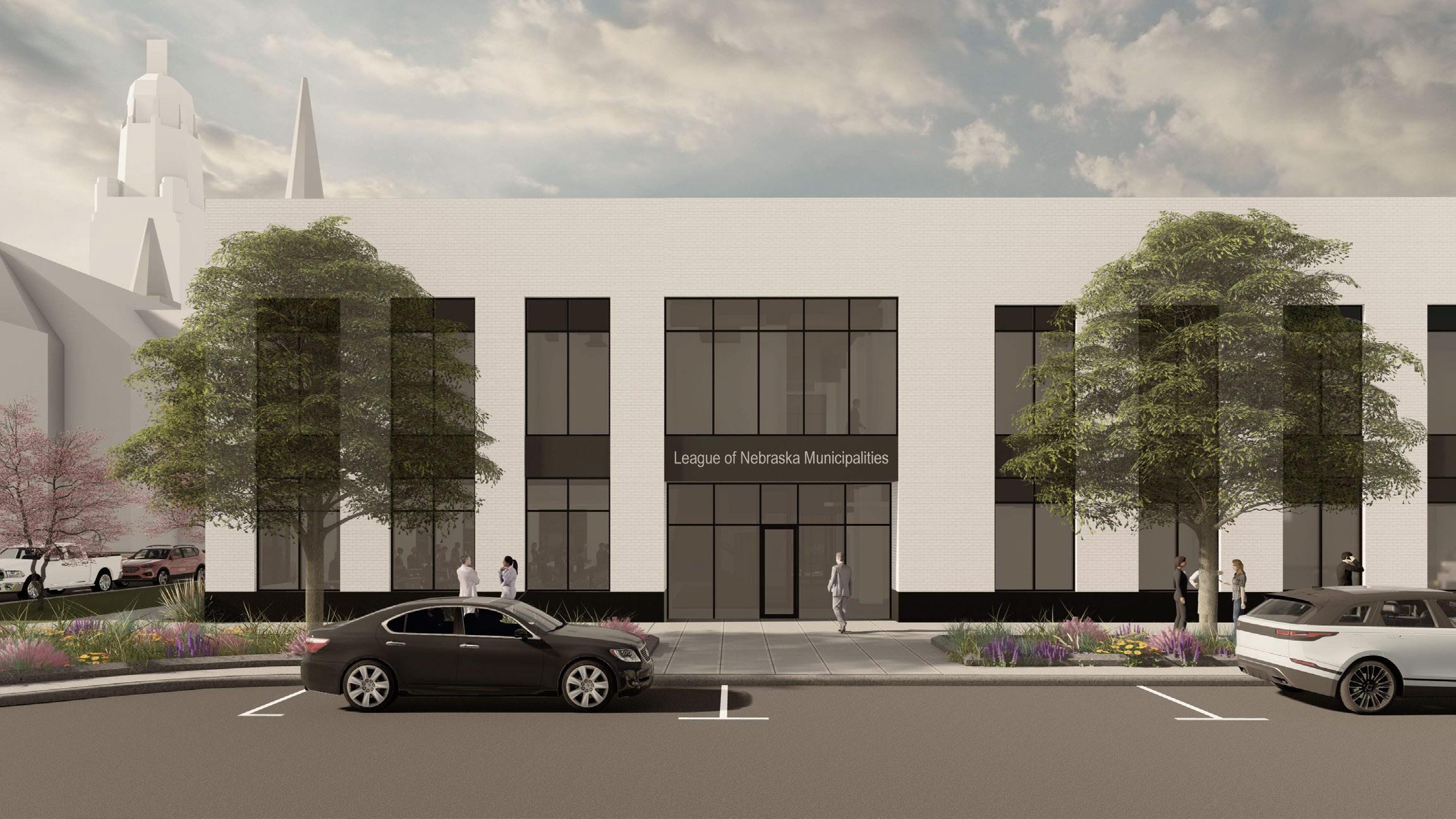

Background about the new League office building
Before 2010, various members of the League Executive Board had numerous discussions about the need for a new League office building when it was clear from engineers and architects that it would not be cost effective to retrofit the building again or make significant repairs to extend the life of the building for another 25 to 50 years. In 2011, the LWC indicated it would be selling its building and surrounding property which had twice the footprint of the former League office building. The League rented parking space from the LWC since the League purchased its property and building at 1335 L Street which had no parking attached.
After the LWC rejected two offers from the League to purchase its building and property, the League Executive Board explored other options, including possibly purchasing property directly north of the former League building. On June 26, 2014, under the leadership of then-League President Marlene Johnson, former Mayor of West Point, the League Executive Board considered a motion to increase its offer to purchase the LWC, in light of previous offers rejected by the LWC. Then-York Mayor Chuck Harris made a motion, seconded by then-Seward City Administrator Brett Baker, which passed unanimously, to offer the LWC $825,000 for its building and property. The offer was accepted by the LWC; the League was told the next highest bid to purchase the LWC was $815,000 from a Lincoln developer.
As an extraordinary example of generosity and servant leadership, Joe Hampton, former Chair of the Lincoln City Council and Past League President from 1982-83, played a critical role in negotiating the purchase of the LWC building and property. Joe also wrote a check for $500,000 from his personal bank account to help the League finance the purchase of the LWC building and property. The League paid $325,000 to the LWC for the remainder of the purchase
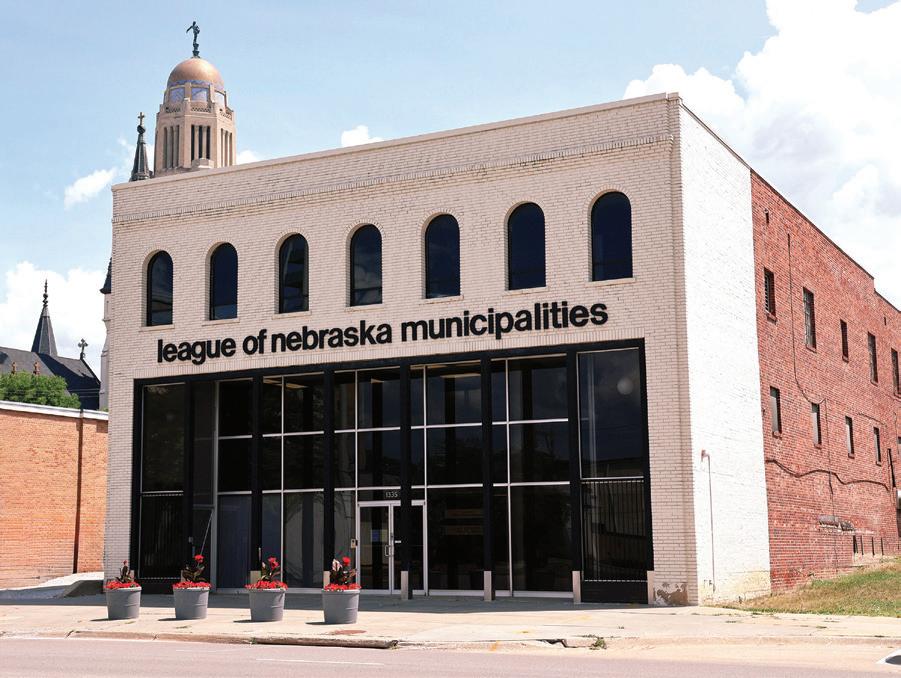
price and reimbursed Joe Hampton within a year. The conference room in the former League office building was named after Joe Hampton; the conference center in the new League office building will continue to be called the “Joe Hampton Conference Center.” In FY 2015-16, efforts to construct a new League office building were delayed until adequate funding was available. Other key dates include: 1) in April 2018, League Officers and others wanted to preserve this location for a new League office building and did not accept an offer from the City of Lincoln to “swap land” so the city could build a parking garage on the north half of the block parallel to L Street; 2) in August 2022, then-League President Paul Lambert, Mayor of Plattsmouth, established and Chairs a League Building Committee which has dedicated countless hours in meetings relating to the demolition and construction of the new League office building; and 3) in FY 2022-24, League President Deb VanMatre, Mayor of Gibbon, has worked closely with Mayor Lambert and provided leadership and guidance to the League Executive Board and staff throughout
Continued on page 19 / See League
5 MAY 2024
Rendering of the new building provided by Clark Enersen.
In the
AFTERMATH...
Gov. Pillen joined the Nebraska State Patrol for an aerial survey of the destruction caused by the Arbor Day tornadoes. In the days following the storms, Nebraskans and communities across the state have come come together to rebuild.
Asof the final damage survey on May 2, the National Weather Service Omaha confirmed 19 tornadoes across Nebraska from the Arbor Day tornado outbreak. Out of the confirmed tornadoes, five have been rated an EF-3, two have been rated EF-2, and eight have been rated EF-1. Peak estimated wind speed was 165 mph southeast of Blair and the maximum tornado track length was 40.9 miles. Total track length for all torndadoes was 201.7 miles and the combined time the tornadoes were on the ground was 6 hours and 5 minutes. The EF rating of a tornado is determined by calculating estimated windspeed based on damage sustained in the path of the storm. “Historically speaking, these are the strongest tornadoes in eastern Nebraska or western Iowa in nearly 10 years,” the NWS - Omaha statement said.
The previous strongest was an EF-3 tornado in Coleridge, Nebraska, on June 17, 2014, which was one day after four EF-4 tornadoes hit northeast Nebraska, including Pilger. The Arbor Day tornadoes stretched from central Nebraska into central Iowa.
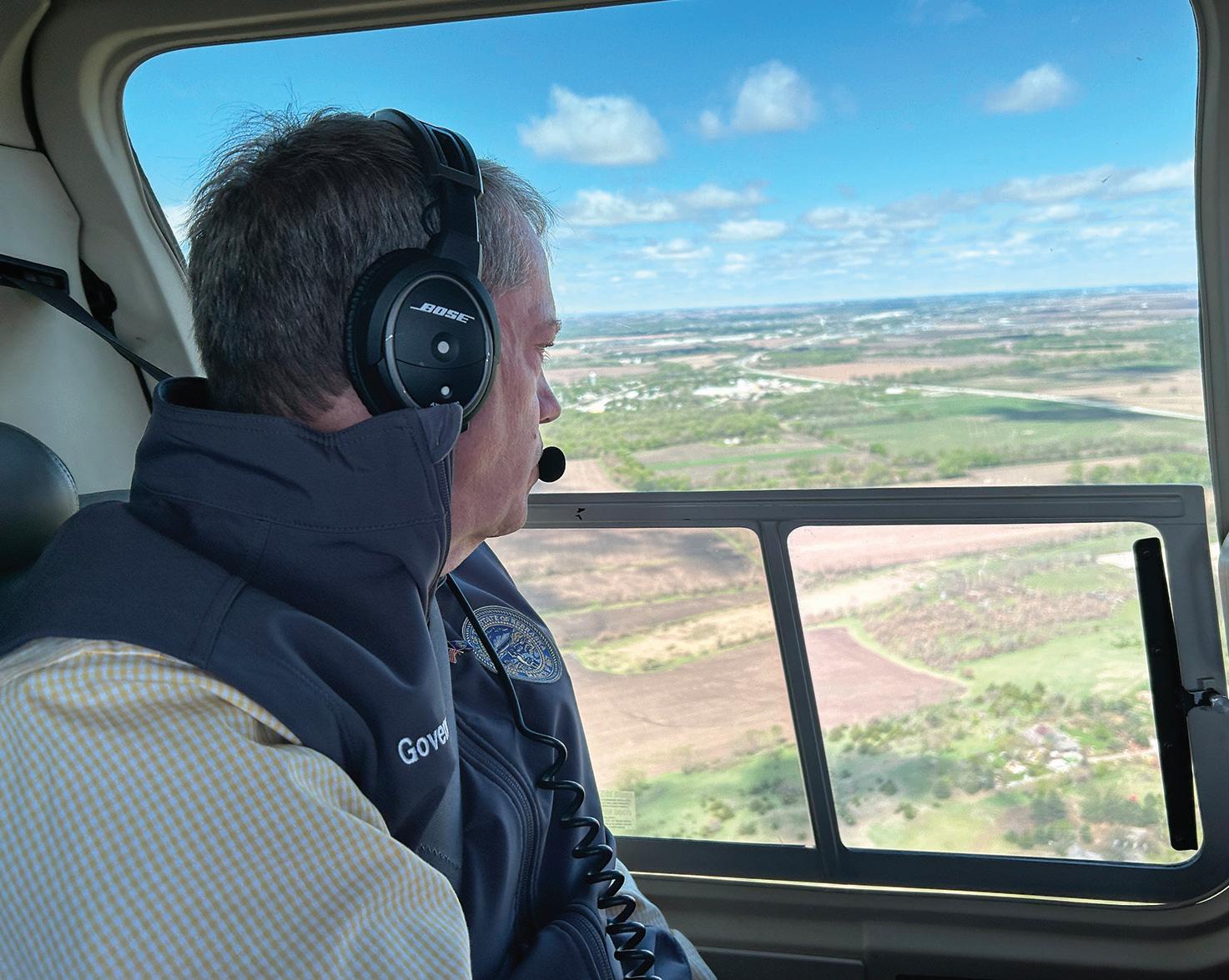


6 NEBRASKA MUNICIPAL REVIEW
Washington County
Garner Industries - Lancaster County
WRITE-UP BY ASHLEY WOLFE
PHOTOS BY NEBRASKA STATE PATROL
Source: Information provided by the National Weather Service

To help
If you are interested in helping with recovery efforts, Erv Portis with NEMA, suggested monetary donations as the best way to help. In Douglas County, the Red Cross is helping with donations and in Washington County, the Salvation Army is playing a significant role in coordinating donations.


7 MAY 2024
Elkhorn
Bennington Lake
Nebraska Department of Economic Development highlights Red Cloud:
Building beautiful communities to inspire the good life
Nebraska offers a peaceful pace of life, family-friendly neighborhoods, and sense of rootedness that are increasingly attractive in an oft-chaotic world. The Nebraska Department of Economic Development (DED) is helping the state’s communities build quality amenities to enhance their appeal. Through Community Development programs, DED is investing in the creation and enhancement of parks, cultural centers, and other public gathering places. These projects elevate local quality of life and help draw new residents and tourists to Nebraska.
Building a better future in NEBRASKA with a strong Public Finance Partner

Our bankers specialize in:
• Bond Anticipation Notes
• Paving Bonds
• Water and Sewer Bonds
• General Obligation Bonds
• Utility System Revenue Bonds
• Lease-Purchase Financing
Call:
(800) 528-5145 I Paul Grieger
(866) 809-5596 I Cody Wickham (866) 809-5443 I Andy Forney (866) 466-9368 I Jerry Spethman
The Community Development Block Grant (CDBG), Civic and Community Center Financing Fund (CCCFF), and Shovel-Ready Capital Project programs are three of the main ways DED supports community betterment initiatives.
• The CDBG program provides funds to help communities enhance economic well-being, local vitality, and quality of life. The program is federally funded through the U.S. Department of Housing and Urban Development (HUD) and is celebrating its 50th
year in 2024. The Cities of Lincoln, Omaha, Bellevue, and Grand Island administer the CDBG program directly in their municipalities. DED administers CDBG program funds for all other Nebraska communities through its annual application process.
• The CCCFF program helps develop cultural centers, aquatic facilities, recreation centers, auditoriums, libraries, and other inviting spaces for communities to gather and play. CCCFF also supports the development of historic buildings and districts. Municipalities and tribal governments may apply for these state funds on an annual basis. Established in 1999 by the Unicameral, CCCFF is funded
Continued on page 30 / See Red Cloud
Hard work recognized for City of Gibbon

The City of Gibbon was awarded the Excellence in Economic Impact award at the annual meeting of the Development Council for Buffalo County on April 29. The municipality was recognized for work that has been to position the community for continued growth–including expansion of the firehall, new community center/city hall and planned downtown improvments. Pictured from the City of Gibbon are: Derrick Clevenger, City Council Member; Pam Rasmussen, City Clerk; Deb VanMatre, Mayor; Matt Smallcomb, City Administrator; and Bob Krier, City Council Member. Photo provided by City of Gibbon.
8 NEBRASKA MUNICIPAL REVIEW
D.A. Davidson & Co. is committed to strengthening the infrastructure and enriching the lives of people in our communities throughout Nebraska and across the nation.
450 Regency Parkway, Suite 400 Omaha, NE 68114 | (800) 206-7523 D.A. Davidson & Co. member FINRA and SIPC dadavidson.com

The land down under
BY MATT LINDBERG, COMMUNICATIONS MANAGER, CITY OF COLUMBUS
Columbus City Administrator Tara Vasicek and Centro Hispano Welcoming & Belonging Director Elizabeth Rodriguez saw kangaroos and held koalas during their visit to Australia, but also left with new ideas they hope can inspire positive change in their city.
“The creativity – that’s really what I took away from them,” Rodriguez said. “The creativity of how they use welcoming and belonging in all aspects of their work … It really opened my mind to all of the possibilities.”
Vasicek and Rodriguez were two of 16 recipients selected from

Free Australia trip fuels new welcoming goals for City of Columbus, Centro Hispano Continued on page 10 / See Australia
9 MAY 2024
Above and bottom right: Centro Hispano Welcoming & Belonging Director Liz Rodriguez, left and City Administrator Tara Vasicek enjoy their time in Australia. In 2023, the two participated in the Rural Welcoming Communities Exchange Program put on by Welcoming America, a nonprofit organization. Photo provided by City of Columbus.
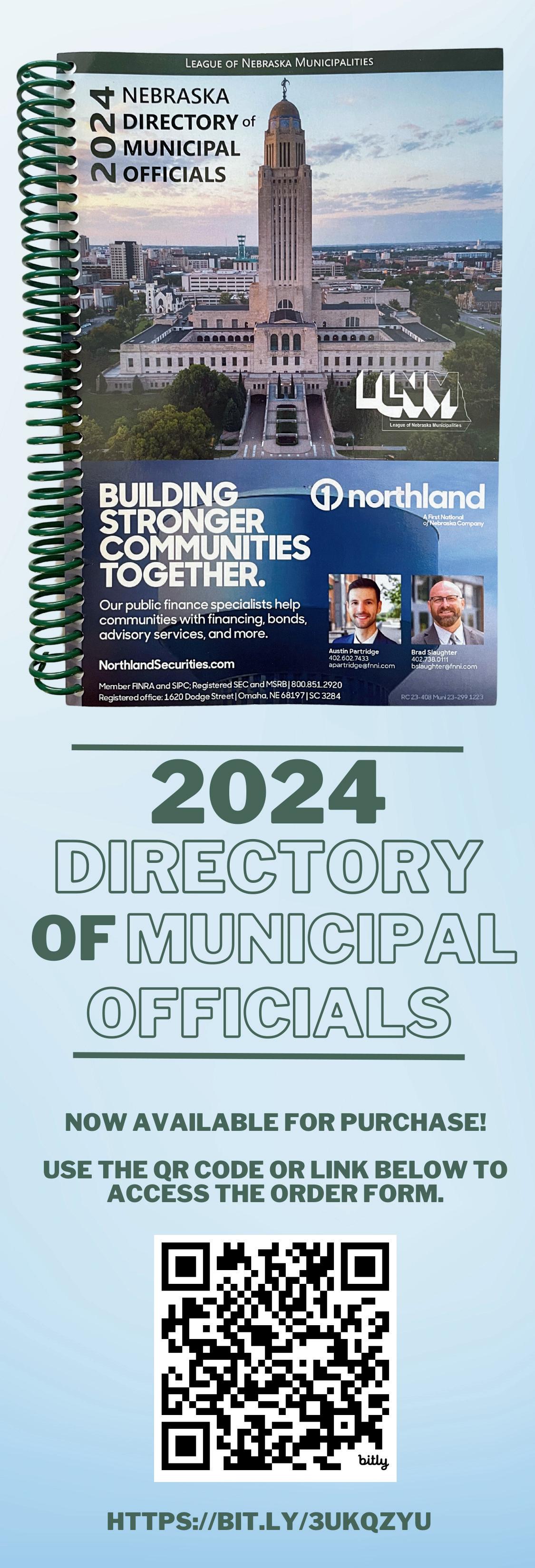

Australia
Continued from page 9
across the world by Welcoming America to participate in its Rural Welcoming Communities Exchange (RWCE) program that started with a week-long visit to California back in April 2023 and was followed by periodic online sessions. It was capped with a weeklong October 2023 visit to Australia.
All program expenses were covered by Welcoming America, a nonprofit organization that provides the roadmap and support institutions need to become more inclusive toward immigrants and all other residents.
The RWCE is administered by Welcoming America in collaboration with Welcoming Australia and its Welcoming Cities program. Welcoming America and Welcoming Australia are partners in the Welcoming International Alliance, a coalition of national welcoming networks convened by Welcoming America as part of its Welcoming International initiative.
Understanding that at least 25% of Columbus’ population identifies as an immigrant, Vasicek jumped at the opportunity to participate and learn about what the city could be doing to be more welcoming to those from different backgrounds.
“Immigration isn’t a political issue; it’s a humanitarian issue,” Vasicek said “But most people in the United States don’t see it that way.
“A lot of residents or citizens have one opinion about immigration because many immediately jump to talk about how a large number of new settlers are illegal or undocumented, instead of being willing to talk about how the United States has a long way to go in immigration reform to address the issues. A large number of people in the United States. have created this whole nationwide stigma about immigration that Australia does not have because they are literally an island. Australia isn’t afraid to deal with immigration the way it should be dealt with, like the United States”
Continued on page 20 / See Australia
NEBRASKA MUNICIPAL REVIEW
A photo of the Sydney Opera House from Columbus City Administrator Tara Vasicek’s and Centro Hispano’s Welcoming & Belonging Director Liz Rodriguez’s trip to Australia in 2023. Photo provided by City of Columbus.
Center for Rural Affairs / The Heartland Environmental Justice Center:
Empowering rural communities like Walthill
BY KJERSTEN HYBERGER CENTER FOR RURAL AFFAIRS
Nestled within UMÓⁿHOⁿ
Nation lies Walthill, a small village with a big story of community resilience and progress. In 2017, Walthill opened its new public library, marking the culmination of years of hard work, determination, and collaboration.
The journey to move the library from an 800-square foot building with no storage and a propensity for leaking during rainstorms to the former fire hall was not without its challenges. The fire hall came with environmental concerns due to its historical use and the presence of asbestoscontaining materials. But with the assistance of the Nebraska Department of Environment and Energy, the village navigated the necessary environmental assessments and abatement process, paving the way for repurposing the space into the new library.
The transformation of the fire hall into a vibrant

community hub exemplifies the spirit of Walthill’s residents and their commitment to enhancing their quality of life. Through fundraising efforts and money from the Community Development Block Grant and the Civic and Community Center Financing Fund, the village mobilized resources and raised more than $400,000 to turn its vision into reality. The new library is bright and cheerful with big windows to let in natural light and reading nooks throughout. There also is a cafe area, complete with a demonstration kitchen and tables for classes, playing board games, or enjoying a snack. The library hosts events for students, families, and community members—from book clubs to cooking classes—as well as adult classes in collaboration with Nebraska Indian Community College. Today, the Walthill Public Library stands as a testament to the power of grassroots initiatives and community-driven development. Walthill’s story is not unique. All across Nebraska, rural communities grapple with environmental justice and energy equity challenges, and this is where the Heartland Environmental Justice Center (HEJC) steps in.

The HEJC offers tailored support to address unique situations and needs. From navigating grant applications to facilitating community needs assessments, it provides valuable assistance at no cost. Additionally, the center offers expertise in policy analysis, technical support, and connections to resources and partnerships. If a community’s needs fall outside of the scope of the HEJC, its team will work to connect it with the appropriate external resources and support networks.
If your community is facing environmental challenges or seeking assistance, visit cfra.org/rural-resources or email ruralleaders@cfra.org

11 MAY 2024
The community of Walthill, through fundraising and money from the CDBG and CCCFF, was able to turn the former fire hall into a library and community hub. Photo provided by Center for Rural Affairs
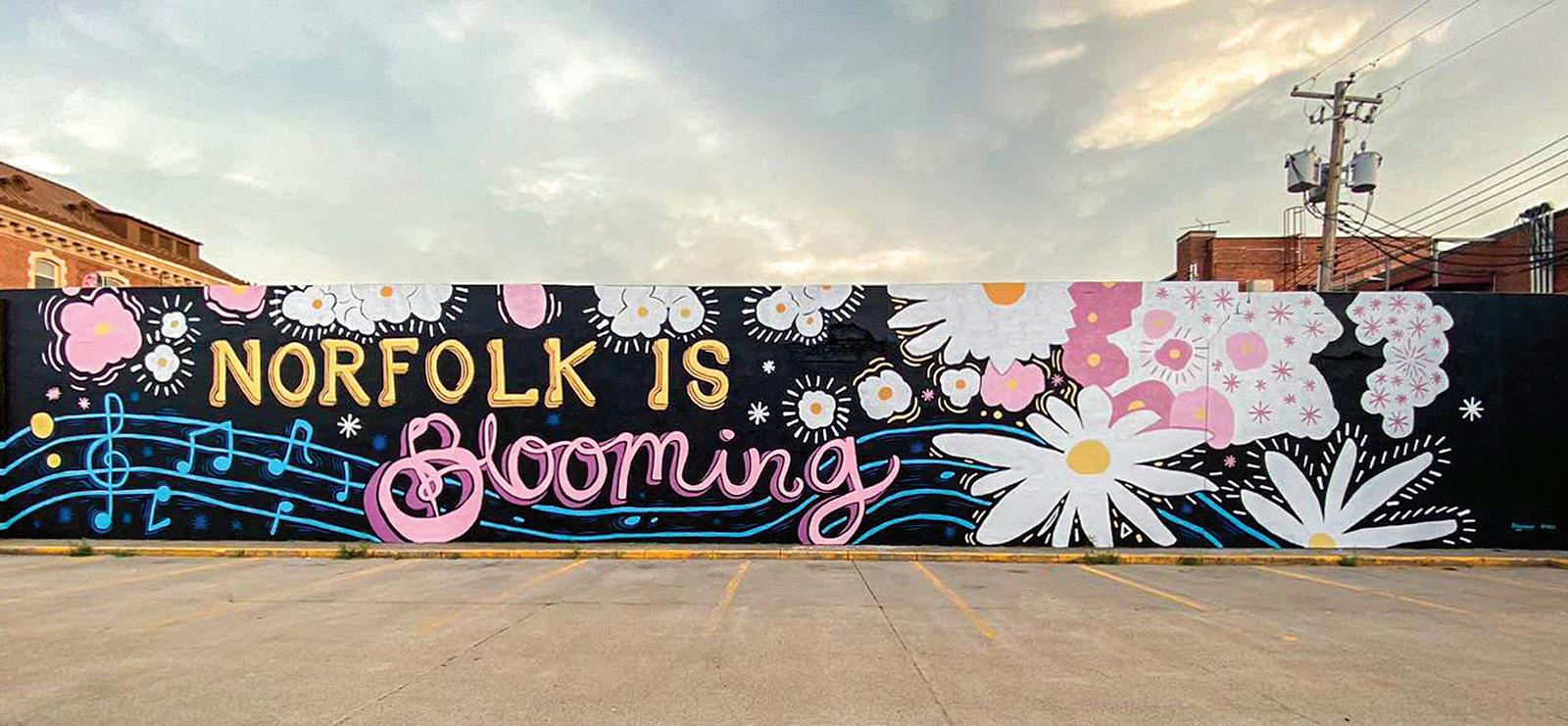
sense A sense of place
City of Norfolk recognized for prioritizing placemaking in downtown
BY ASHLEY WOLFE, MARKETING & COMMUNICATIONS DIRECTOR, LNM
Congratulations to the City of Norfolk for winning runner-up in the 9th Annual Strongest Town Contest!
This competition brought Norfolk to the table with 16 other North American municipalities in a March Madness-style competition. This year, the contest specifically highlighted communities with progress in the areas of safety, financial resiliency, housing, and transportation.
Norfolk’s claim to fame within the competition, and one of the reasons for their continual advancement through the bracketstyle competition, is the city’s efforts to transform downtown into an inviting space where people want to live and spend time.

The development of Riverpoint Square is only one part of the community transformation that has taken place in Norfolk in recent years. Riverpoint Square serves as a community gathering place with a weekly farmers market and a bandstand used for a Friday night concert series. Additionally, the space was developed with native grasses and plants in mind—with the entire area framed out by a larger-thanlife and colorful mural of Johnny Carson. But rewind 10 years ago and this centerpiece of the community was merely a parking lot.
“I think we really try to be open to new ideas, new ways of doing things and adding new people around the table.”
Josh Moenning Norfolk Mayor
“I think we really try to be open to new ideas, new ways of doing things, and adding new people around the table,” Norfolk Mayor Josh Moenning told Strong Towns in the city’s community profile.
12 NEBRASKA MUNICIPAL REVIEW
Photo provided by City of Norfolk
Photo provided by City of Norfolk

In addition to creating public spaces, Mayor Josh Moenning and the City of Norfolk also have prioritized improving accessibility within the community. Some changes include:
• Replacing signalized intersections with four-way stop signs and adding more mid-block crosswalks
• Working with local restaurant owners to expand outdoor dining, increased emphasis on public art and murals and a reworking of a former dam site on the Elkhorn River to turn it into a utilizable space for paddlers and tubers.
• Additionally the City of Norfolk was the first municipality in Nebraska to update its zoning to allow tiny-house villages in an effort to expand its housing supply.
“To really get at the affordability question, we need to stop thinking that we can build houses the same way today that we did 60 years ago,” Mayor Moenning told Strong Towns. “While still seeking a developer to pursue a tiny-house project, the city has seen an increase in townhouses, duplexes, and multi-family construction, and is trying to be nimble to allow a variety of housing types as “people are looking for smaller units in high density settings that are proximate to amenities.”
Norfolk, Nebraska—Most Progress Toward a Robust & Responsive Housing Supply
Medicine Hat, Alberta—Most Progress Toward a Better Public Engagement Process
Edmonton, Alberta—Most Progress Toward Building Safer Streets
Bloomington, Illinois—Most Progress Toward a Transparent Local Budgeting Process
These strategic changes in Norfolk have proven positive for the community. With the improvements younger residents are returning to the community because the growth allows them to see a future for themselves there.
“The way in which the world has changed economically has benefited a place like ours, because we recognize that if we build a certain quality of life, and we build a community that people want to live in, we don’t have to recruit the big smokestack factory to continue having a healthy economy,” Moenning said. Strong Towns is a
13 MAY 2024
media advocacy
shifts
American
articles,
live events, and city partnerships, they provide knowledge and tools to help cities transform their streets
501c(3) non-profit and
organization that
conversations around the North
development pattern. Through
podcasts, videos,
and communities.
First Round Contest Winners
Photo provided by City of Norfolk
Embracing e-bikes within communities
 JULIE HARRIS EXECUTIVE DIRECTOR, BIKE WALK NE
JULIE HARRIS EXECUTIVE DIRECTOR, BIKE WALK NE
We’ve been in the bicycle advocacy business for a long time, with many hours spent sitting at information booths chatting with folks and answering questions about a smattering of topics - until we emerged from the pandemic. Now, the one thing everyone wants to talk about is electric bikes. Today, it is common to see all kinds of e-bikes in addition to traditional designs. As with any conversation about bicycling, there is no shortage of opinions about e-bikes: “They’re wonderful! They’re a menace! They aren't allowed! Yes, they are allowed! Throttles! Speed limits! Oh, the humanity!” Indeed, as we learned while chatting with many communities at a recent League of Nebraska Municipalities conference, even the smallest of towns have e-bike riders.
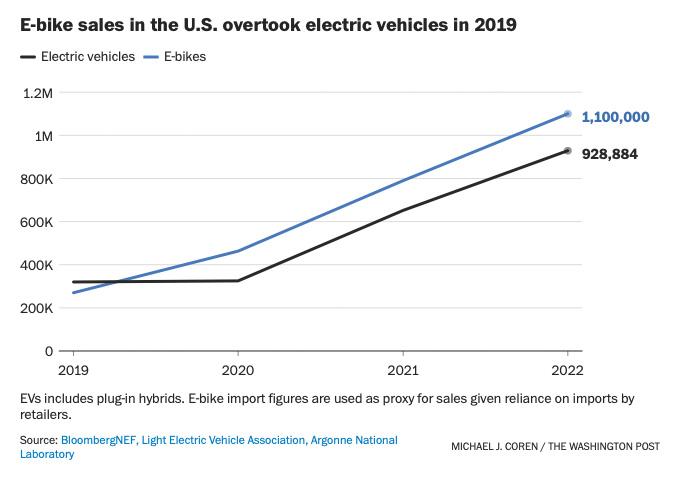
We enthusiastically support e-bikes. Having an electric assist while pedaling knocks down several barriers keeping people from riding: hills, fitness, sweat, convenience, and enjoyment, to name a few. E-bikes also allow people to continue getting physical activity as they age. More people on bikes means better physical and mental health, cleaner air, improved road conditions, and more accessible transportation options.
Unfortunately, how one defines the term “e-bike” is not clear-cut. Seeing the rapidly changing landscape, Bike Walk Nebraska worked with Sen. Jane Raybold earlier last year on a bill to update the definition of an "electric bicycle" within state statute. The bill included a nationally recognized framework defining what an e-bike is vs. isn't:
• A bicycle, with fully operating pedals, having a battery-operated motor to provide assistance;
• A battery-operated motor not exceeding 750 watts of power;
• An e-bike falling within the guidelines of the best practice, 3-tier classifications
CLASS 1
Equipped with a battery-operated motor that provides assistance only when the rider is pedaling
20-MPH maximum pedalassisted speed.

• A device that looks like a bicycle, but lacks pedals;
• A device equipped with an aftermarket, gas-powered engine;
• Anything 100% dependent on throttle for power (i.e., scooter or moped).
CLASS 2
Equipped with a battery-operated motor that may be used exclusively to propel the bicycle.
20-MPH maximum pedalassisted speed.
CLASS 3
Equipped with a battery-operated motor that provides assistance only when the rider is pedaling.
28-MPH maximum pedalassisted speed.
14 NEBRASKA MUNICIPAL REVIEW
is: What it isn’t:
What an e-bike is vs what it is not What it
Where you can ride an e-bike within Nebraska is dependent on the trail and city ordinances. People who use e-bikes are subject to the same laws, regulations, and trail etiquette norms as everyone else. Regardless of what type of bike, we must follow the rules of the road and ride safely according to our surroundings. At the end of the day, we encourage Nebraskan communities to embrace e-bikes. Using a bicycle for running errands or making trips to the coffee shop is a great alternative, especially when the weather is nice.
Here are some easy ways you can encourage bicycling:
1.) Effective and Convenient Bike Parking
We encourage the use of steel U-Locks rather than easily cut cable locks, in addition to the installation of U-shaped bike racks. Schoolyard racks take up more space and are nonfunctional for adult-sized bikes or effective locking. A good rack will allow two points of contact with the bike.
Placing bike racks in convenient locations is key to bike friendliness. People want to keep an eye on their bikes, even when they are locked up. Prominent placement, with plenty of space around the rack for easy access is essential. Providing covered parking or even allowing folks to bring their bicycles inside gets you bonus points!
2.) Safe Bike Routes
“How can we get a trail?” is probably the second most discussed topic. Certainly, off-street trails provide a safe and relaxing place to enjoy a bike ride, but if you build a trail and people need to drive their bikes to the trailhead - a key piece of the puzzle is missing.
Real bike friendliness comes with creating routes connecting people to/from key destinations, including trailheads. Consider working with a consultant or local officials to identify low-traffic, slower-speed streets that can be used as bike routes. Asking local bicyclists which streets they prefer to use is another great way to get intel. Many times, a street one block over from a main thoroughfare provides convenient access in an environment more people are willing to ride.
3.) Encourage, Encourage, Encourage
Building a community culture that embraces bicycling will add to bike friendliness. Organize groups to participate in events during National Bike Month or Bike to School Day. Local businesses can get involved by adding bike parking, planning social rides in the summer, or giving discounts to customers who arrive on bikes. (Talk to Eagle, NE about how much money local businesses bring in each summer from Lincoln residents participating in the weekly Nacho Ride!)

Ultimately, bicycling is self-promoting: when people start seeing more folks riding, they will be inspired to join in the fun.
4.) Let Us Help You!
Bike Walk Nebraska is happy to be a resource. If we can’t help, we likely know someone who can. Stay tuned to our social media, plan to attend our annual Bike Walk Nebraska Summit, or find more information and resources on our website www.bikewalknebraska.org.
15 MAY 2024
USDA Rural Development: Lagoon renovations and replacements
Together, America Prospers
Together, America
As communities in Nebraska take inventory of their existing water and wastewater systems, evaluating the age of the infrastructure, identifying parts of the system that need to be repaired or replaced, as well as evaluating whether or not the current systems meet the current needs of their residents, they also are looking for ways to fund these improvements. USDA Rural Development has several different programs to help a community with the many different projects a community may have on its list, including a program that can solve those water and wastewater concerns, including lagoons!
Water and Environmental • Direct Loan and Grant
Together, America Prospers
Water and Environmental • Direct Loan and Grant
Nebraska
Lagoon Renovation and Replacement Projects Across Nebraska
Lagoon Renovation and Replacement Projects Across
Water and Environmental • Direct Loan and Grant
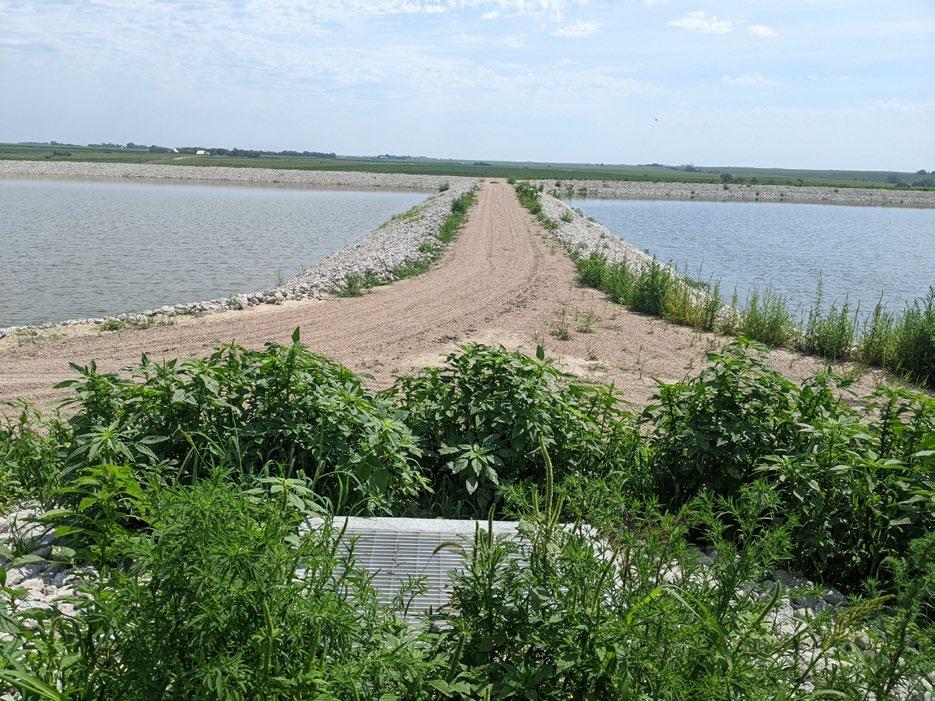
- New
Lagoon Renovation and Replacement Projects Across Nebraska
For the Village of Lodgepole, its existing sewer treatment system consisted of two lagoons constructed in 1956. Renovations included removing sludge build up, repair splitter boxes, interior slope stabilization and installation of new liner, and raised the cell floor by one foot.



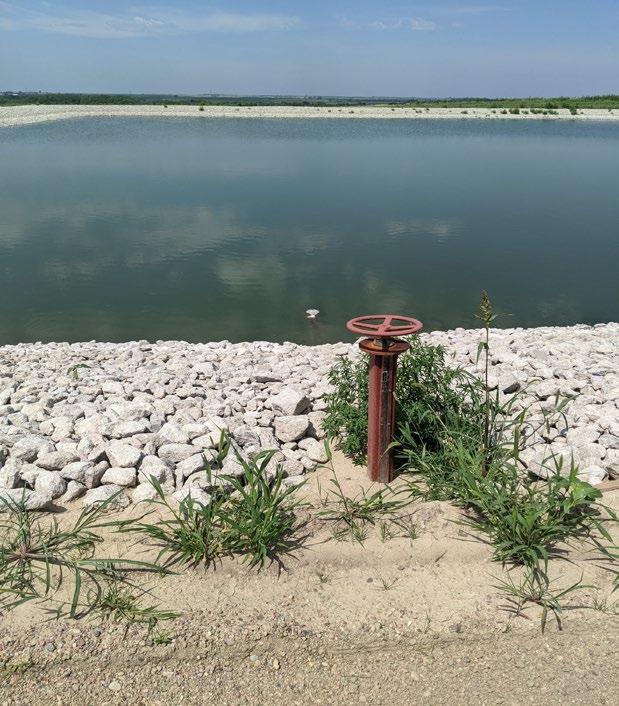
Rural Development funds were used to help the Village of Amherst replace their aging lagoons that were built in 1965, with them exceeding capacity and groundwater levels impacting lagoons. Constructed new 3 cell, full retention lagoon system, new lift station and force main.
- New Lagoon
Rural Development funds were used to help the Village of Amherst replace their aging lagoons that were built in 1965, with them exceeding capacity and groundwater levels impacting lagoons. Constructed new 3 cell, full retention lagoon system, new lift station and force main.
Rural Development to help the Village their aging lagoons 1965, with them and groundwater lagoons. Construct retention lagoon station and force
Rural Development funds were used to help the Village of Amherst replace its aging lagoons that were built in 1965, with them exceeding capacity and groundwater levels impacting lagoons. Constructed new 3 cell, full retention lagoon system, new lift station and force main.
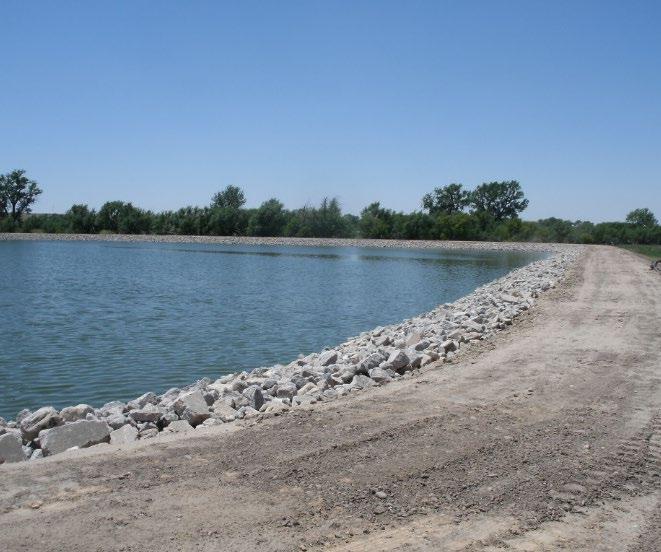



For the Village of Lodgepole, their existing sewer treatment system consisted of two lagoons constructed in 1956. Renovations included removing sludge build up, repair splitter boxes, interior slope stabilization and installation of new liner, and raised the cell floor by one foot.
For the Village of Lodgepole, their constructed in 1956. Renovations slope stabilization and installation

For the existing consisted constructed included up, repair slope stabilization of new liner, floor by
The Village of ’s lagoons and lift station were built in 1980 and 1981, with three lagoon cells. Two were still in service, but the third cell had been dry, which affected the permeability of the liner. There was dike erosion and vegetation growth in the lagoons affecting the liners. This project was a complete rehabilitation of the lagoons, erosion control, relining the lagoons, rip rap, force mains, generator through the land application process, and new lift station.
The Village of Fairfield’s lagoons and lift station were built in 1980 and 1981, with three lagoon cells. Two were still in service, but the third cell had been dry, which affected the permeability of the liner. There was dike erosion and vegetation growth in the lagoons effecting the liners This project was a complete rehabilitation of the lagoons, erosion control, relining the lagoons, rip rap, force mains, generator through the land application process and new lift station.
To learn more about any and all of the USDA Rural Development Programs that might be of value to your community, visit its website at rd.usda.gov/ne or call its main line at (402) 437-5551.
The Village of Fairfield’s lagoons and lift station were built in 1980 and 1981, with three lagoon cells. Two were still in service, but the third cell had been dry, which affected the permeability of the liner. There was dike erosion and vegetation growth in the lagoons effecting the liners This project was a complete rehabilitation of the lagoons, erosion control, relining the lagoons, rip rap, force mains, generator through the land application process and new lift station.

The Village and lift and 1981, Two were third cell affected liner. vegetation effecting was a the lagoons, relining mains, application station.
16 NEBRASKA MUNICIPAL REVIEW
Nebraska
May 2024 • USDA is an equal opportunity provider, employer, and lender.
Lodgepole Lagoon Renovation – Before
Lodgepole Lagoon
Amherst - New Lagoon
Amherst - New Lagoon
New Lagoon
May
2024 • USDA is an equal opportunity provider, employer, and lender.
Lodgepole Lagoon
Lodgepole Lagoon Renovation – After
Amherst
Lagoon
Amherst
Fairfield - New Lagoon
May 2024 • USDA is an equal opportunity provider, employer, and lender.
Lodgepole Lagoon Renovation – Before
Lodgepole Lagoon Renovation – After
Amherst - New Lagoon
Amherst - New Lagoon
Fairfield - New Lagoon
Fairfield - New Lagoon


Together, America Prospers
Water & Waste Disposal Loan & Grant Program
What does this program do?
This program provides funding for clean and reliable drinking water systems, sanitary sewage disposal, sanitary solid waste disposal, and storm water drainage to households and businesses in eligible rural areas.
Who may apply?
This program assists qualified applicants who are not otherwise able to obtain commercial credit on reasonable terms. Eligible applicants include:
• Most state and local governmental entities
• Private nonprofits
• Federally recognized Tribes
What is an eligible area?
Areas that may be served include:
• Rural areas and towns with populations of 10,000 or less – check eligible addresses
• Tribal lands in rural areas
• Colonias
What kinds of funding are available?
Long-term, low-interest loans. If funds are available, a grant may be combined with a loan if necessary to keep user costs reasonable
How may the funds be used?
Funds may be used to finance the acquisition, construction, or improvement of:
• Drinking water sourcing, treatment, storage, and distribution
• Sewer collection, transmission, treatment, and disposal
• Solid waste collection, disposal, and closure
• Storm water collection, transmission, and disposal
In some cases, funding may also be available for related activities such as:
• Legal and engineering fees
• Land acquisition, water and land rights, permits, and equipment
• Start-up operations and maintenance
• Interest incurred during construction
• Purchase of facilities to improve service or prevent loss of service
• Other costs determined to be necessary for completion of the project
• See 7 CFR Part 1780.7 and 1780.9 for a complete list
What is the loan term and rate?
The loan term is up to a 40-year payback period, based on the useful life of the facilities financed with a fixed interest rate. The interest rate is based on the need for the project and the median household income of the area to be served. Contact us for details and current interest rates applicable for your project.
Are there additional requirements?
• Borrowers must have the legal authority to construct, operate, and maintain the proposed services or facilities.
• All facilities receiving federal financing must be used for a public purpose.
• Partnerships with other federal, state, local, private, and nonprofit entities that offer financial assistance are encouraged.
• Projects must be financially sustainable.
17 MAY 2024

piece
OF
AHISTORY
The Lincoln Woman’s Club has long been a piece of the downtown landscape and civic history

The Lincoln Woman's Club was formed on November 17, 1894, after numerous clubs founded in preceding years were brought together through a City Federation. The Lincoln Woman's Club was incorporated in 1907 as a nonprofit corporation to "stimulate intellectual, cultural, and moral development among the women of Lincoln; to promote good fellowship among the members; and to advance worthy and selected civic and philanthropic enterprises." The focus of the Lincoln Woman's Club remained consistent throughout its history promoting education, religion, and charitable work.

Through the early years of the club's history, it met at a variety of locations. The building in 1954 of the former structure at 14th and L Streets enabled the club to consolidate and expand its programs. In 2014, the League of Nebraska Municipalities purchased the former building of the Lincoln Woman's Club at 407 S 14th Street. The funds from the sale of the building were to be used to continue its educational, religious, and charitable work, including providing scholarships for young women.
18 NEBRASKA MUNICIPAL REVIEW
Photo of the Lincoln Woman's Club Building from the Nebraska State Historical Society. Photo by D. Murphy Photography circa 2016.
Rendering of the Nebraska State Capitol pulled from the 1932 Annual Announcement program for the Lincoln Woman’s Club.
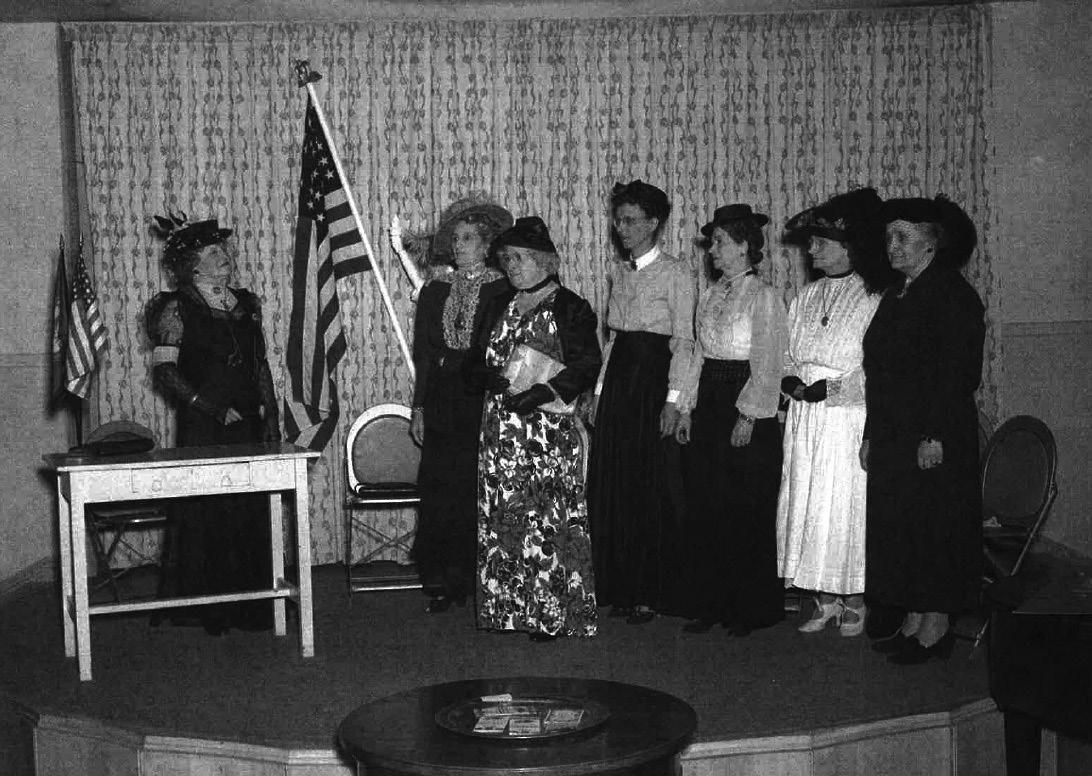

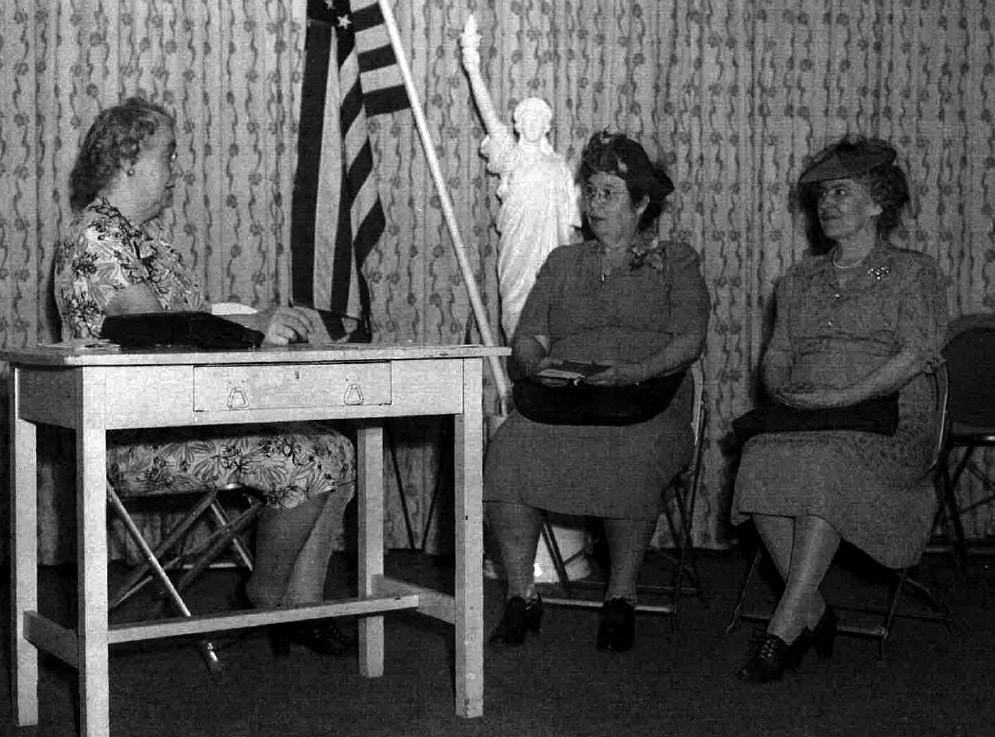
League
Continued from page 5
this demolition and construction project which required approval from: a) the City of Lincoln’s Historic Preservation Commission to remove an historic landmark designation from the LWC property; and b) the Capitol Environs Commission relating to design oversight.



Thanks to the following individuals for their invaluable assistance: President Deb VanMatre; Immediate Past President Paul Lambert ; Members of the League Building Committee; Lincoln Mayor Leirion Gaylor Baird and the Lincoln City Council ; Papillion Mayor David Black; Rod Storm , former Blair City Administrator; Scott Lockard, President, Hampton Enterprises; Travis Barrett , Architect, Clark Enersen; Peter Hind , Director, Lincoln’s Urban Development Department; Hallie Salem , Redevelopment Manager, Lincoln’s Urban Development Department; and others.
Please take time to review the excellent photos and video clips of the demolition and upcoming construction process on the League’s website.
19 MAY 2024 800-383-PUMP www.electricpump.com 402-333-9660 www.mc2h2o.com You can count on us for all your fluid handling and process solutions! An Electric Pump Company
18 and 19: These
photos, provided by
were taken in April of 1945 to commemorate the 50th Anniversary
the
Page
black and white
History Nebraska,
of
Lincoln Woman's Club.
Australia
Continued from page 10
Program participants visited with officials from various Australian communities to learn more about that. The Australian government recently released its Migration Strategy which outlines a new vision for Australia’s migration system, with a policy roadmap containing eight key actions and more than 25 new policy commitments and areas for future reform.
This Migration Strategy is informed by extensive consultation with businesses, unions and other stakeholders, and more than 450 submissions received as part of the Review of the Migration System, according to the Australian government’s Department of Rural Affairs.
Beyond that, what was most eyeopening to Vasicek and Rodriguez was how the various Australian communities embraced the immigrant population and utilized everyday activities to make them feel at home.
“We haven’t thought of using sports as a welcoming and belonging tool and they do. Not only soccer or baseball but football and wrestling, swimming as well,” Rodriguez said. “We celebrate football and wrestling here, so those could be tools for us as far as welcoming.”
Vasicek echoed that sentiment, noting the city needs to do a better job of providing services to residents of all backgrounds to ensure all programs and services are accessible to everyone.
The city administrator talked about the possibilities of offering more multicultural programming for things such as events in Frankfort Square and getting feedback from the community on how to get residents of all backgrounds excited about local happenings. She envisions
the city getting to a point where all information it shares in English also is translated into other languages, such as Spanish and French.
One of the major differences they saw between our community and those in Australia was the collaboration when it came to welcoming. Vasicek and Rodriguez said Columbus is known for its collaborative spirit, but pales to Australia when it comes to working together on immigration and welcoming. They said they would love for their own entities, Platte County, the local school districts ,and the Columbus Area Chamber of Commerce to look at finding ways to make Columbus a more welcoming community to people of all backgrounds.
“We would like to get to a place where all the organizations work together and share the responsibility,” Vasicek said.
Rodriguez agreed.
Participating in the program proved to be all Vasicek had hoped it would be and then some. She’s got a photo of herself holding a koala as tangible evidence of her experience, but helping foster real development locally when it comes to immigration and welcoming is what she hopes will last.
“My main expectation was to better understand how to be more welcoming no matter the program or service the City of Columbus is providing,” Vasicek said. “I didn’t realize before all this started that we could be doing so much more. So, I’m excited.”
Source – City of Columbus
Editor’s note: Thank you to Matt for sharing this story with the League. Matt also said Centro Hispano translated the story for the city–so there was an English and Spanish version of this story available on the city website! What a great example of putting inclusivity into action!
“Not just Centro, or the city, or the chamber, or the county, or the schools. It should be everyone.”
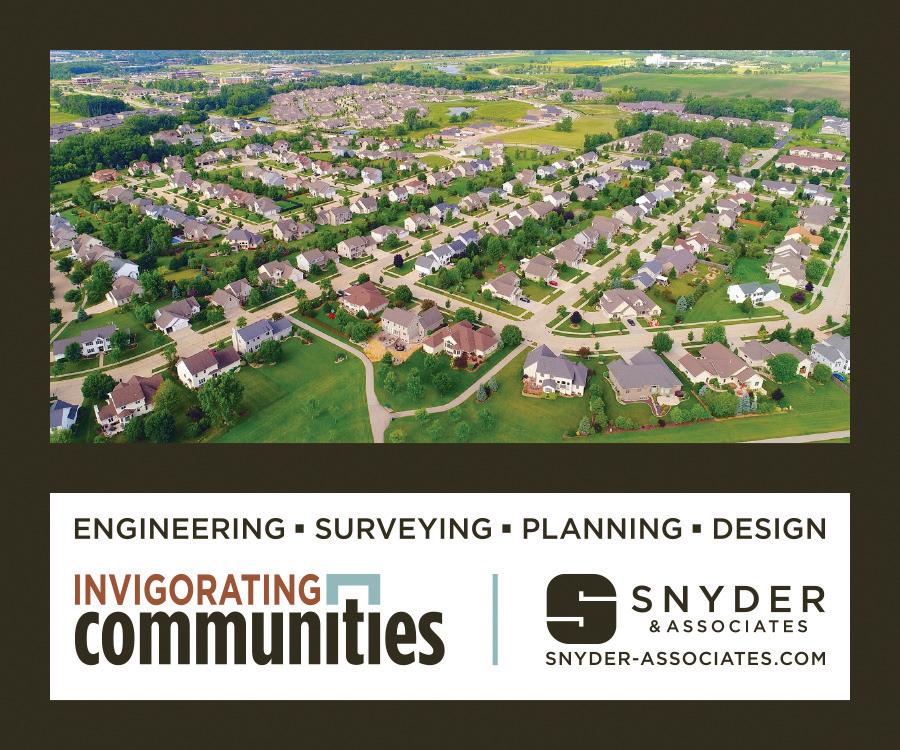
20 NEBRASKA MUNICIPAL REVIEW



21 MAY 2024
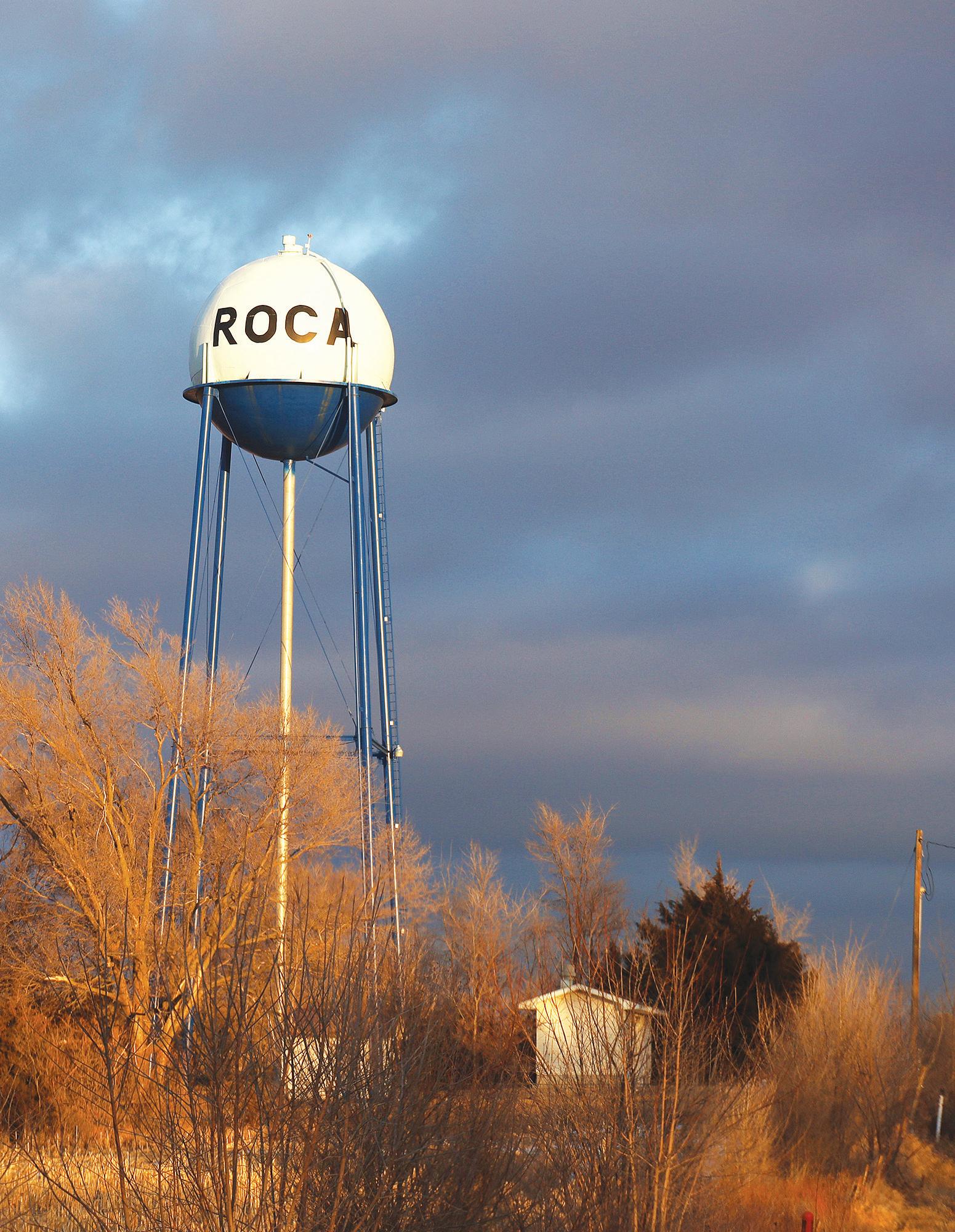
Safety & quality of work
... are they related?
Reasearch says yes and data shows one does not need to be emphasized over the other
To most people, safety means a way to keep oneself and others free from injury or prevent property from damage. Quality of work refers to how good the final work product is or how well the service was rendered. Some would say that safety impedes productivity. It takes too long. Emphasizing safety moves the goal from completing a project well and on time to doing it safely. To some people, getting the job done well sometimes requires that safety be set aside. According to research - safety and quality of work are very closely related, and one does not need to be emphasized over the other. Employees who are diligent about being safe are more than likely to be diligent about achieving a good work product or service. There are several reasons for this.
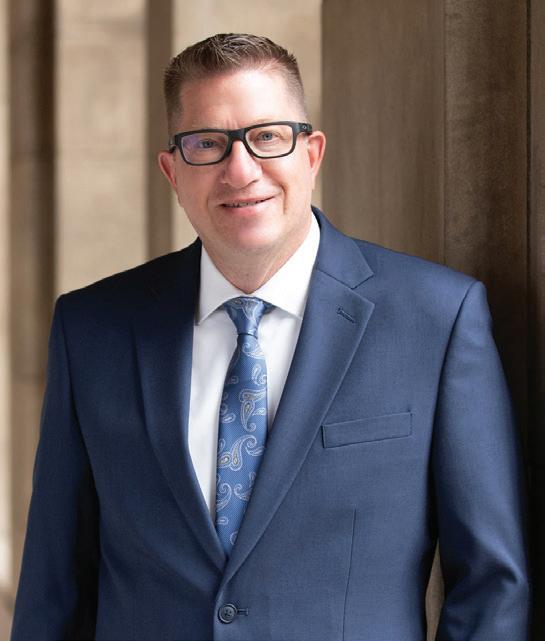 DAVE BOS EXECUTIVE DIRECTOR, LARM
DAVE BOS EXECUTIVE DIRECTOR, LARM
According to an OSHA publication, “A Safe Workplace is Sound Business,” safety programs not only reduce injuries and property damage but have the following benefits:
• They improve compliance with laws and regulations.
• They reduce costs, including significant reductions in workers’ compensation payments.
• They engage workers.
The last reason is interesting: how can safety programs engage workers? When workers are given a task and resources to perform it, they are expected to complete it in a certain amount of time. When that worker takes safety into account, they will need to think through the task step by step to wear the proper personal protective equipment (PPE) and have the correct safety measures in place, such as setting up support structures. A project that is thought through carefully is more apt to be thoughtfully
22 NEBRASKA MUNICIPAL REVIEW
Continued on page 30 / See Safety
Photo of the Roca water tower courtesy of Diane Becker/LARM
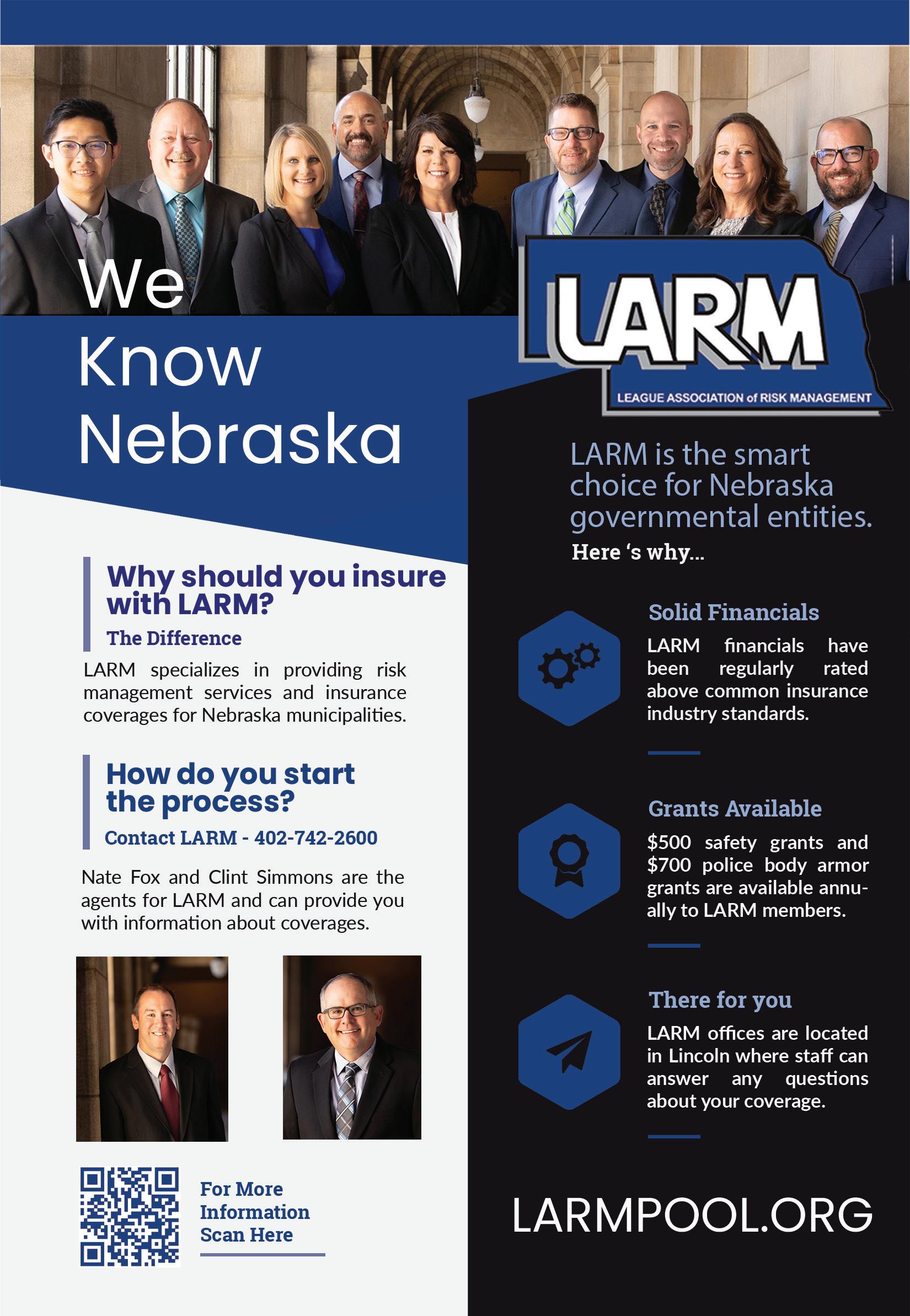
23 MAY 2024
CitiesSpeak Podcast: Bipartisan Leadership in Congress with U.S. Representatives Don Bacon and Salud Carbajal
Representative Don Bacon was recently featured on National League of Cities’ monthly podcast, CitiesSpeak with Clarence Anthony. Each episode of the podcast dives into a critical issue facing local leaders today, featuring conversations with elected leaders and policy experts from across the country. The podcast is a relaxed and entertaining resource for local policymakers looking for ideas and information to bring back to their communities. The new episode, recorded live at NLC’s Congressional City Conference, features Rep. Bacon (R-NE) and U.S. Representative Salud Carbajal (D-CA), both members of the Problem-Solvers Caucus, discussing the benefits of listening and working with members from across the political aisle to address our nation’s most pressing challenges. The conversation was moderated by Irma Esparza Diggs, NLC’s Senior Executive & Director for Federal Advocacy.
CitiesSpeak can be found on all major podcasting forums. Happy listening!
Source – National League of Cities
Over 49 million homeowners will put themselves at risk this year by not contacting 811 before digging.*
Whether you’re an excavator or a facility operator, keep yourself and those around you safe by helping to increase awareness about the importance of contacing 811 before digging.
*According to a February 2023 survey of American homeowners.






















24 NEBRASKA MUNICIPAL REVIEW
Find us online
NMPP Energy presents Community Project of the Year Awards
NMPP Energy presented its Project of the Year Awards at its Annual Conference. The awards are presented annually to NMPP Energy communities to recognize projects or programs that create a more cohesive community. The award winners received $200 to be used for a community project of their choice. Communities presented awards were:
City of Central City – Central Park Project - City officials worked with the Advanced Leadership Class at Central City High School to develop a park proposal for a four-block area in the middle of the city. After the students gained City Council approval, engineers took the concept and began construction. The park includes a playground area with a zipline and courts for basketball, pickleball, bocce, shuffleboard, and gaga ball.
City of Cozad – Citywide Electric System Inspection Project
- The city partnered with a Kearney-based startup to conduct a citywide thermal inspection pilot program of the city’s electric distribution system in one night, using advanced vehiclemounted camera sensors. The inspection uncovered more than 30 previously undetected issues within the city’s infrastructure, which could then be proactively addressed.
City of Grant – Downtown Revitalization Project - The project was a two-year process with the primary goal of improving access to businesses for the city’s senior residents. The project included cleaning up sight lines and improving lighting for highway and foot traffic by replacing new electric light poles and eliminating overhead electric lines; replacing aging sidewalks with fiberglass reinforced concrete sidewalks, curbs and gutters; and adding new benches, trash receptacles and parking stalls.
Village of Stuart – Electric Distribution System Rebuild, Voltage Conversion and New Generator and Switch Gear Project - The village’s project was a 10-year process that included upgrading its 2,400-volt electric distribution system to a 4,160-volt system, replacing many components of the systems in the process. High-voltage switches and transformers were added to prepare for the transition to a higher-voltage line. In 2021, the village purchased a used diesel generator from the City of Plainview to replace two older units. The village retained two existing units which were reworked for 4,160-volt output.
Source – NMPP Energy
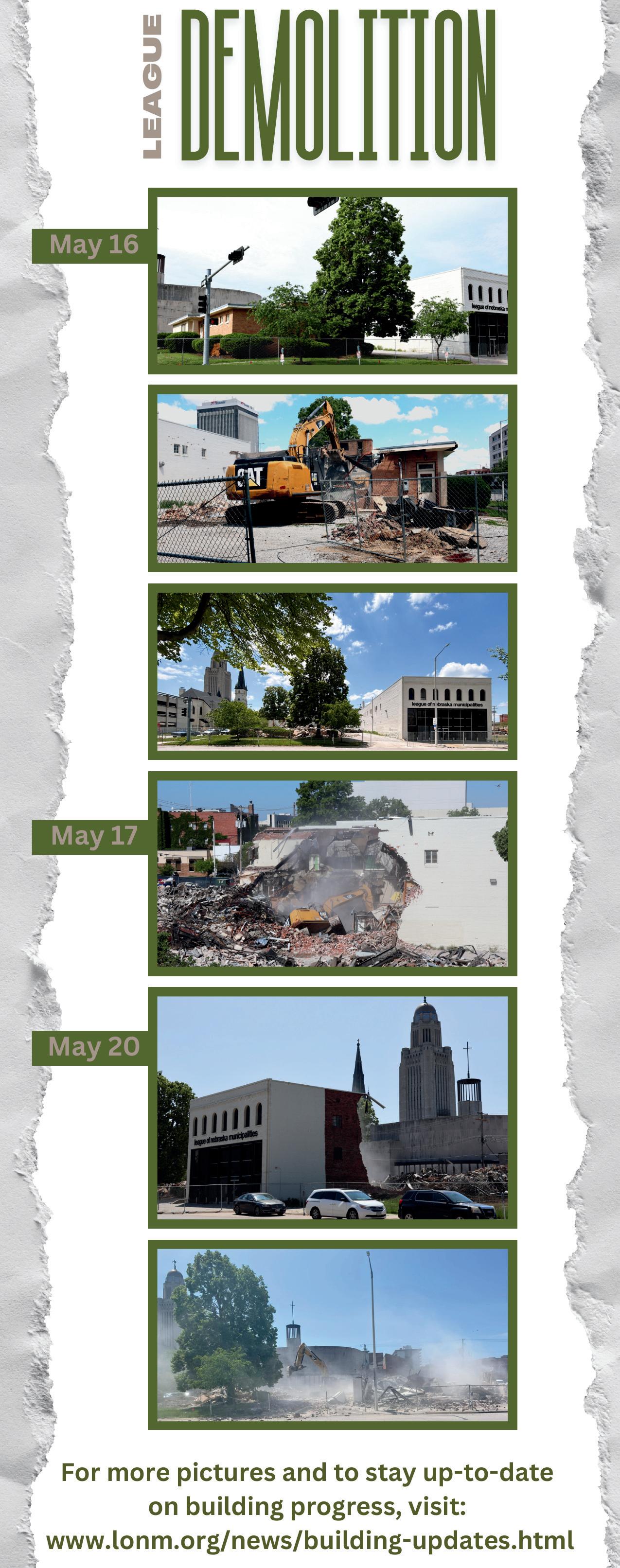
25 MAY 2024
Building a future of their own
Lincoln middle school students imagine and build fully electric city for national competition in Washington D.C.
Hello!
I am pleased to introduce you to the Future City Competition by DiscoverE. Each year, the Future City competition challenges students to imagine and build a city that will exist 100 years in the future based on a given theme. This year's challenge asks students to create a 100% electrically powered city with energy generated from sources that keep their citizens and the environment healthy and safe. To meet this challenge, students will develop a work plan, write a 1,500-word essay, build a model, and prepare a presentation about their city.
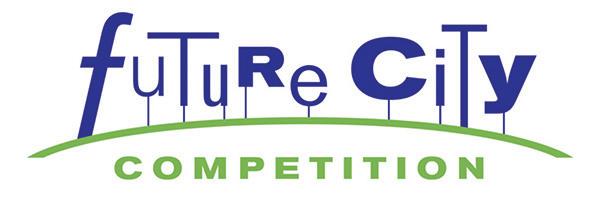

My name is Christy and I mentor the Lux Middle School team from Lincoln. Our Future City teacher is Lori Feldman, the TComputer Science Teacher at Lux. We have two teams, 6th-grade and 8th-grade, that competed in the January Nebraska Regional Future City competition. The Lux 8th Grade Future City team won first place and qualified for the nationals. As a result, they received a free trip to Washington, D.C., to compete with other schools from across the nation, China, and South Africa.
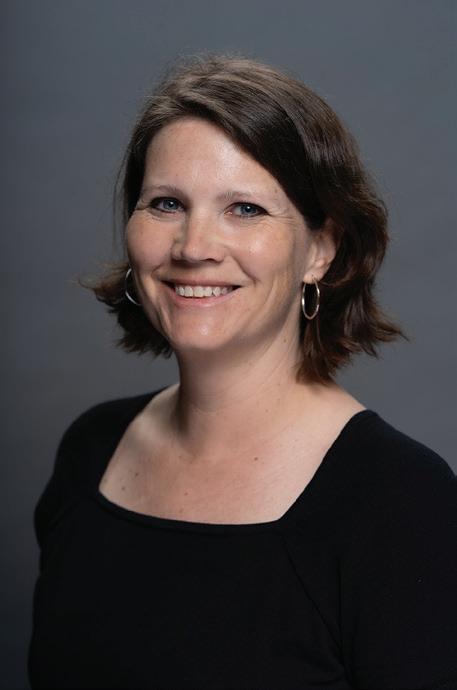 Christy Eichorn
Christy Eichorn
Although the team did not win the national competition, they did have the opportunity to meet an ambassador, tour the U.S. Capitol, and see many U.S. monuments, such as the Lincoln Memorial and the Washington Memorial. What a learning experience!
Last year, they did not make it to nationals, but the experience they gained at the regional competition ignited their passion for engineering and city planning. I continue to see that same fire as new and younger students participate in the program. Our 6th-grade team is so excited for next year that they are already working on their ideas. The theme for next year is: design a floating city and provide two innovative examples of how your floating city works and keeps its citizens healthy and safe.
Read more on page 27
26 NEBRASKA MUNICIPAL REVIEW
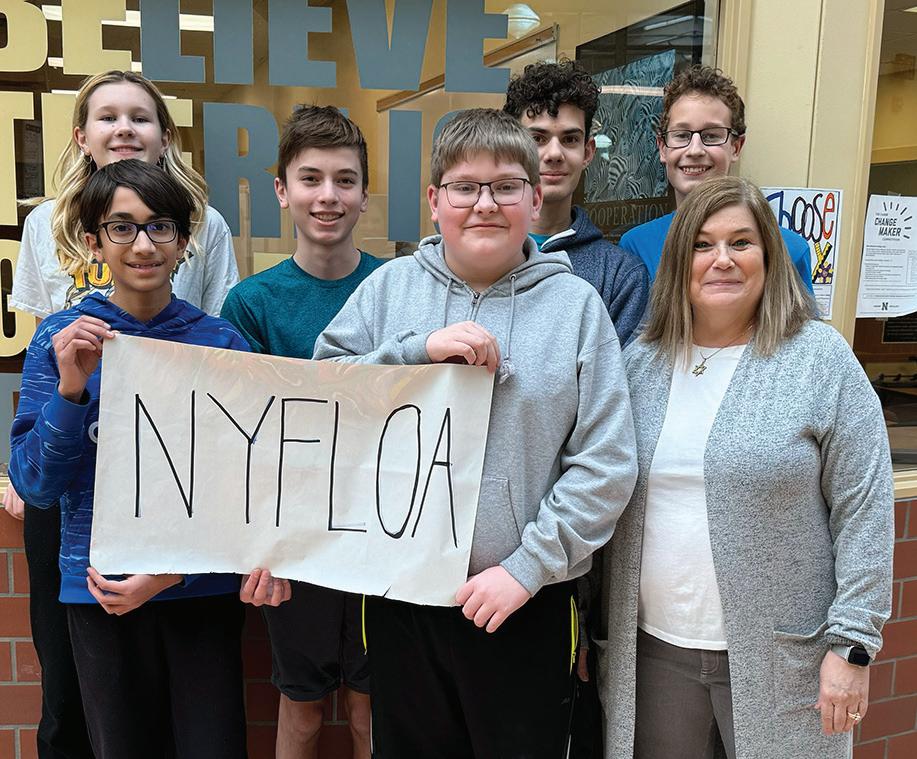

Although I am very proud of our students at Lux, I am disappointed that there are not more middle schools taking advantage of this fantastic learning opportunity. The program is not just limited to middle schools, home schools and nationally recognized organizations like the Boys and Girls Clubs also can participate. Future City is free and provides all the necessary educational materials. Programs can participate as a class or a club. All you need to get started is a teacher, a mentor, students willing to imagine and learn, and a place to build your model.
I have been mentoring the Lux Middle School Future City teams since 2019, and I have seen kids grow to become civically engaged, enhance their planning and engineering skills, and flourish as speakers and presenters. I am proud of this team's achievement. I want everyone to know that this is an opportunity for all children to imagine, explore, and build robust, sustainable cities of the future.
Thank you again for helping us get this team the recognition it deserves and helping us shine a spotlight on a program that is building wellrounded, confident future leaders.
Sincerely,
-Christy Eichorn
Future City Mentor and Mom of three Lux Future City students
27 MAY 2024
Christy’s (continued)letter
Interested in learning more for your area? See page 28!
Above: Lux Middle School Future Cities team Nyfloa poses with teacher Lori Feldman. The team recently traveled to Washington D.C. to compete and share their passion for engineering and city planning. Below: Students pose for an early-morning photo in front of the U.S. Capitol in Washington D.C. Photos provided by Christy Eichorn.






The Lux Middle School team teacher is Lori Feldman, but she is retiring at the end of the school year. If you have questions or would like more information on the program, reach out to Christy at christy.eichhorn@ gmail.com. She would be happy to help with any questions!
At Lux, the Future City program is offered as an after-school club, but some schools treat it as a class, such as last year’s regional winner. That team was from Waverly. Their teacher is Laurie Little, and her email is laurie.little@district145.org.
Another good resource is Jodi Chapek from East Butler Middle School in Brainard. She uses Future City as part of her curriculum for students with IEPs (this is a plan or program developed to ensure that a child with an identified disability who is attending an elementary or secondary educational institution receives specialized instruction and related services).
28 NEBRASKA MUNICIPAL REVIEW
Learn more! Additional Resources:
You can find more information on Future City at https://futurecity.org/
The Lux Middle School 8th grade Future Cities team poses for a photo. The team placed first in January at Nebraska Regional Future City competition. As a result, they received a free trip to Washington, D.C., to compete in the national competition with other schools from across the nation, China and South Africa. Photo provided by Christy Eichorn.
Above left: A sunny day in Washington, D.C. Above right: Chloe finds it tricky to describe an entire city in just one word. Photos provided by Christy Eichorn.
The students visited the Nebraska monument at the National World War II Memorial while in Washington D.C. Photo provided by Christy Eichorn.
GET A QUOTE AND JOIN TODAY!

The League Insurance Government Health Team (LIGHT) helps hundreds of its members throughout Nebraska obtain affordable health insurance coverage.
Plan and Network Choices
With seven plan options and three networks to choose from, you’re sure to find one that meets your group’s coverage and benefit needs.
Affordable Plan Options
Offering your employees much-needed protection against the high cost of medical care:
• Three PPO options
• Four HSA-eligible high deductible options
• Prescription drug coverage
Enrollment Options
Single: Covers the employee only
Employee and spouse: Covers the employee and their spouse
Employee and children: Covers the employee and their eligible dependent children, but does not provide coverage for the spouse
Family: Covers the employee and eligible dependents including a spouse
RECEIVE DEDUCTIBLE AND OUT-OF-POCKET CREDIT FROM YOUR CURRENT VALID GROUP PLAN WHEN YOU SWITCH!
Available Network Options
With several networks available, you have easy access to quality providers:
• NEtwork BLUE (Statewide)
• Premier Select BlueChoice (Regional)
• Blueprint Health (Regional)
• Out-of-state network availability
LET’S GET STARTED
Contact your current local Agent/Broker Or contact
Dennis Maggart
Executive Vice President P: 913-378-9841 or 816-718-0335
Dennis@McInnesGroup.com
Jane Limbach
Account Man ager P: 913-378-9840
Jane@McInnesGroup.com
29 MAY 2024
Blue Cross and Blue Shield of Nebraska is an Independent Licensee of the Blue Cross and Blue Shield Association. 60-025-58 (01-17-23)
Red Cloud
Continued from page 18
through a turnback of 30% of state sales tax generated by certain arenas and their nearby retailers.
• The Shovel-Ready Capital Project program was established in 2021 to assist non-profits with capital projects delayed by the coronavirus pandemic. Initially, it was funded primarily with federal dollars received by Nebraska through the American Rescue Plan Act.
Safety
Continued from page 22
completed. Steps are less likely to be skipped or forgotten. Doing a job safely will often entail it being done more slowly, enhancing the quality of the finished job.
Researchers from the Department of Civil Engineering in Australia found that the more unsafe a job site was, the more mistakes were made on projects, with many tasks having to be redone, equipment and property more than likely to be damaged, and worker injuries more frequent which would then put off a project or require less skilled workers to complete it. When it comes to considering safety and the quality of a finished project or service, it doesn’t make any difference
PROFESSIONAL DIRECTORY


In 2023, the Nebraska Legislature approved a second round of shovel-ready awards using money from the state’s general fund.
The benefits of these programs are on display in Red Cloud, a charming town of 1,000 residents in south-central Nebraska and the childhood home of Willa Cather—one of America’s greatest writers.
Continued on the next page
what size the community is, how many employees it has, or whether the person working is a volunteer or full-time staff member. Since safety and quality of work done are inseparable, supervisors should be all the more motivated to require safety training, attendance at regular safety meetings, and evaluations of accidents or close calls. A city or village invests a great deal of money and effort into its staff, property, and equipment, and safety practices go a long way to protecting those resources, which, in the end, increases the quality of service provided to the community. It’s essential to make safety and high-quality standards the goals of municipal government. They’re not polar opposite themes but they are mutually beneficial.

MUNICIPAL
BASIC
UPDATING FOR AMERICAN LEGAL AND OTHER CODES
UPDATING FOR ZONING REGULATIONS POLICY MANUALS
Personal Service / Nebraska Company
P.O. Box 164, Neligh, NE 68756 Phone 402.887.5022 leagle@mcnallylaw.net www.mcodeservices.com


30 NEBRASKA MUNICIPAL REVIEW Financial & Single Audits Budget Consulting & Preparation Retirement Plans Benchmarking & Rate Studies Contact Marcy Luth, Michael Hoback Joe Stump, Kyle Overturf or Tracy Cannon 1203 W. 2nd Street Grand Island, NE 68801 Ph 308.381.1810 Fax 308.381.4824 www.gicpas.com ENGINEERING ARCHITECTURE CONSTRUCTION FIELD SERVICES Omaha - 402.493.4800 | Lincoln - 402.488.2500 SCHEMMER.COM
MUNICIPAL CODE SERVICES, INC.
CODE REVISION
CODE FOR SMALL VILLAGES
_________
_________
Community Development Block Grant
In 2015, assisted by $300,000 in CDBG tourism development funds, the City of Red Cloud, the Willa Cather Foundation (WCF), and other partners began construction on the National Willa Cather Center (NWCC) — a multi-use facility designed to celebrate and preserve the author’s life and works. Featuring a museum, shops, climate-controlled archive, and other amenities, the NWCC serves as the centerpiece of Red Cloud’s heritage tourism assets. The NWCC was completed in 2017, with former First Lady Laura Bush presiding over the ribbon cutting.
A community survey conducted in 2015 found that childcare access was one of the biggest issues facing the future of Red Cloud. At the time, there was only one certified childcare provider within a 20mile radius of Red Cloud. With support from a CDBG grant, Red Cloud has built one of the nicest, most innovative childcare facilities in the state—The Valley Child Development Center.
Civic and Community Center Financing Fund
In 2019, the City of Red Cloud and WCF received a $562,000 CCCFF award to restore local historic sites and improve its accessibility to tourists. These properties included Farmers and Merchants Bank, Burlington Depot, Grace Episcopal Church, and St. Juliana Catholic Church. Recently, DED announced another CCCFF award for Red Cloud Heritage Tourism Development. The community will use the funds to restore Hardwick
Park. The project includes creation of a memorial to honor the area’s veterans, including Donald Stratton, a decorated World War II veteran who survived the attack on Pearl Harbor and went on to serve throughout the war.
Shovel-Ready Capital Projects
The Willa Cather Foundation has undertaken a major project to renovate and expand the historic Potter Block building. The completed development will include a 28-room boutique hotel (Hotel Garber), event and meeting space, catering facilities, a small library, and artwork on exhibit. DED is supporting the project with a $2.3 million shovel-ready project award.
In October 2023, DED awarded an additional shovel-ready project grant of $350,000 to support WCF with restoration of the Willa Cather Childhood Home.
The home, where Cather lived from 1884 to 1890, is one of only 21 National Historic Landmarks in Nebraska. It’s a featured destination in Nebraska’s Tourism’s 2024 Passport program.
Combined, these initiatives are making Red Cloud an even more wonderful place to live, and they’re strengthening the community’s ability to attract new families and promote itself to tourists.
Engineering a world where everyone thrives.

31 MAY 2024
Engineering | Architecture | Surveying | Planning jeo.com Source – Nebraska Department of Economic Development
BURBACH AQUATICS,
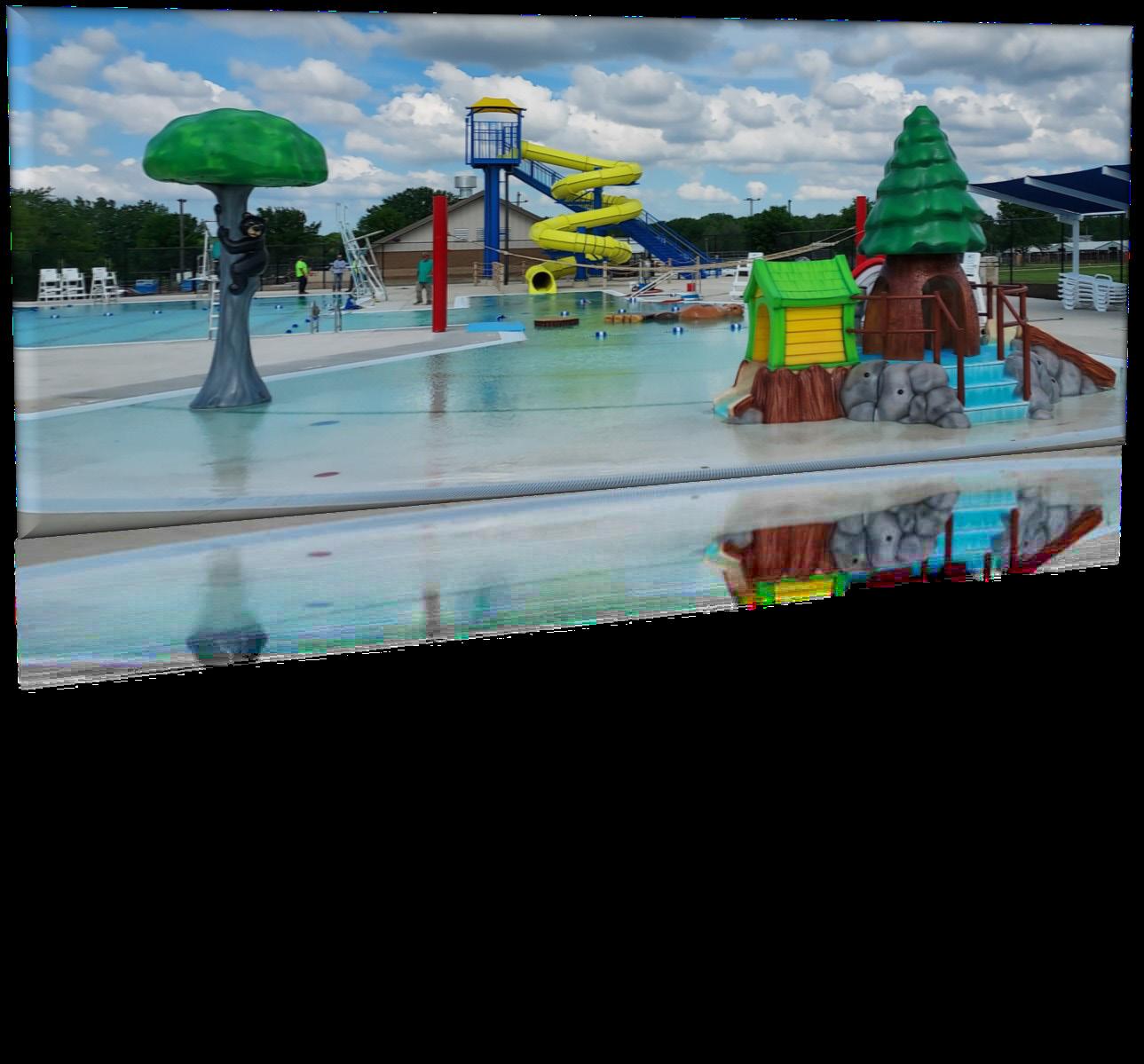
Is your pool ready for summer?
Did your pool leak last swim season?
High Water Bill?
Excessive Chemical Use?
Dropping Water Levels?
Then you need to give Burbach Aquatics, Inc. a call.
Pool leaks are problematic and ignoring them creates much bigger problems. Especially when water is being purchased, treated, and heated, the financial loss increases rapidly.

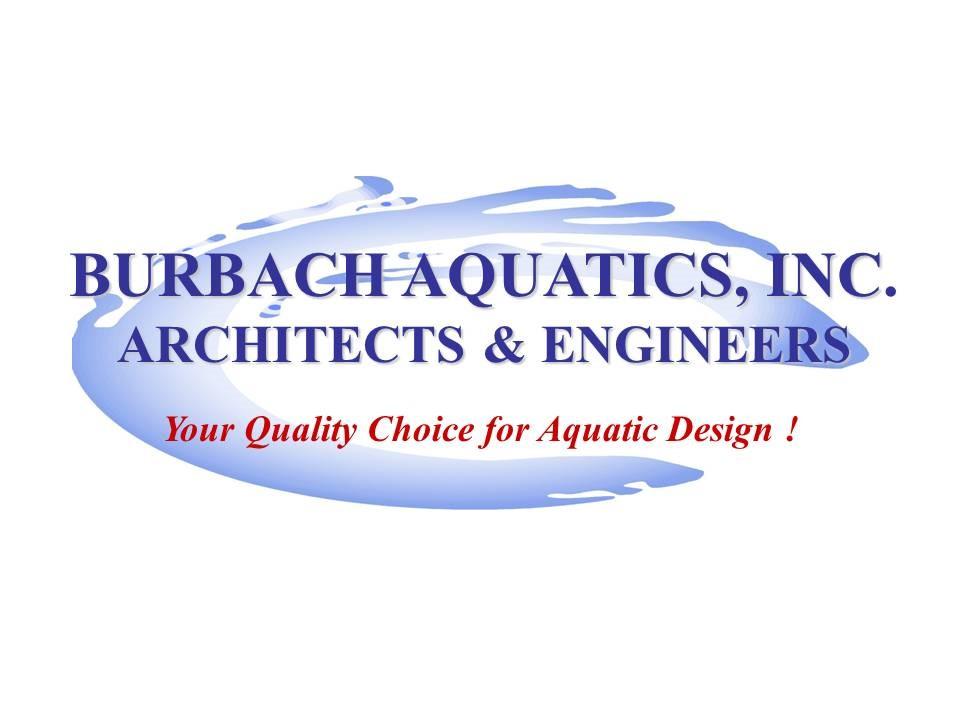

Phone: 608-348-3262

32 NEBRASKA MUNICIPAL REVIEW burbachaquatics.com Burbach
Inc. 5974 State Highway 80 South Platteville,
53818
Aquatics,
Wisconsin
Fax: 608-348-4970 Email: Support@Burbachinc.com
INC. PROVEN RELIABILITY IN AQUATIC DESIGN FOR OVER 45 YEARS!!
© 2024 BURBACH AQUATICS, INC.




 L. LYNN REX, EXECUTIVE DIRECTOR, LNM
L. LYNN REX, EXECUTIVE DIRECTOR, LNM





















 JULIE HARRIS EXECUTIVE DIRECTOR, BIKE WALK NE
JULIE HARRIS EXECUTIVE DIRECTOR, BIKE WALK NE

























 DAVE BOS EXECUTIVE DIRECTOR, LARM
DAVE BOS EXECUTIVE DIRECTOR, LARM















 Christy Eichorn
Christy Eichorn


















